September / October 2023
Groundwater Banking on California Croplands
New Instances of Herbicide Resistance in California Small Grain Crops
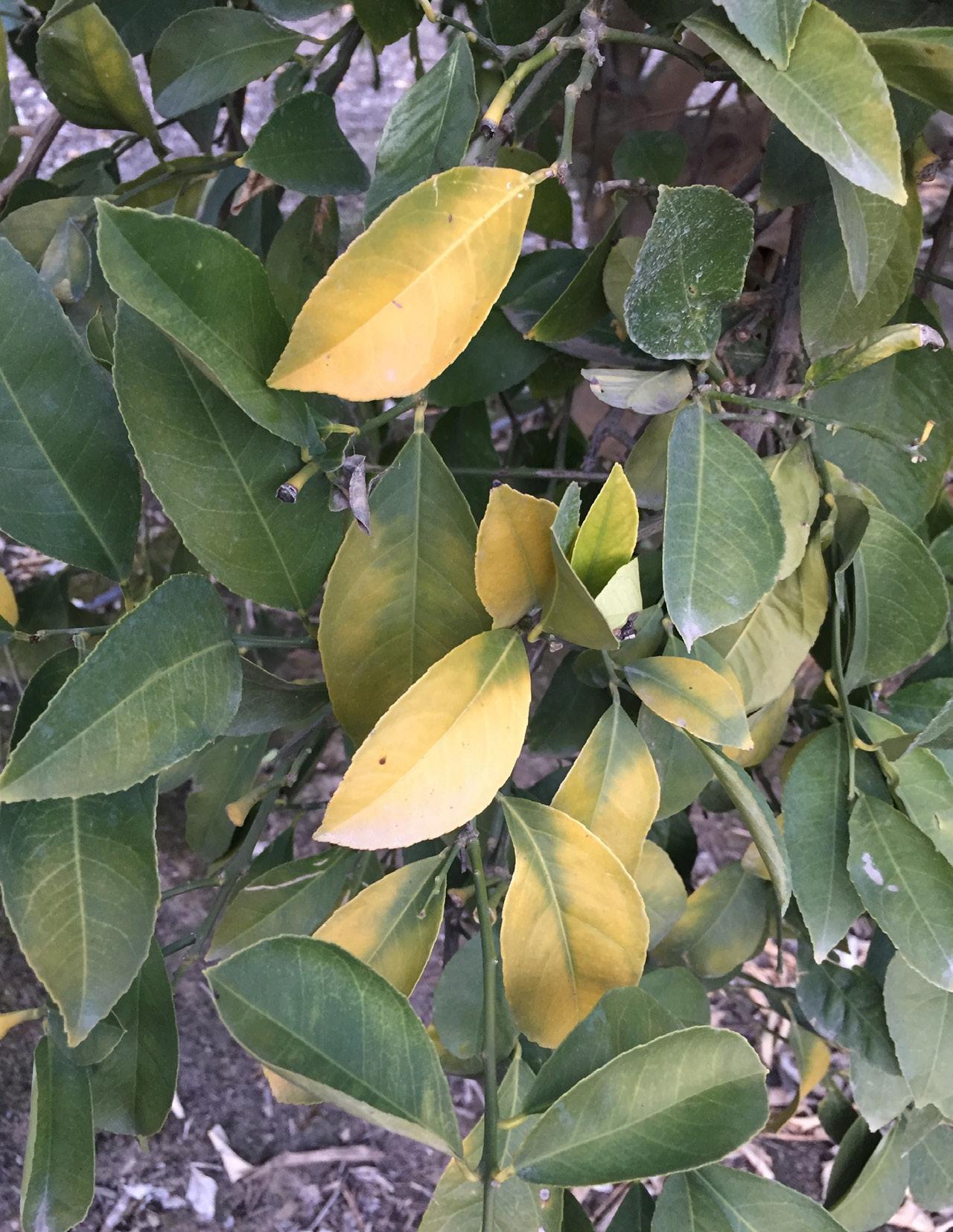
Biostimulants and the Role of Cytokinin in Crop Performance
September 27th - 28th


8: Issue 5
Volume
Photo courtesy K. Van Leuven





2 Progressive Crop Consultant September / October 2023 IronFORCE H3 EDDHA MICRONUTRIENTS info@agroplantae.com ● (559) 498 0388 ● www.agroplantae.com Capturing Maximum Genetic Potential Manufactured in CALIFORNIA
Groundwater Banking on California Croplands

New Instances of Herbicide Resistance in California Small Grain Crops

Biostimulants and the Role of Cytokinin
PUBLISHER: Jason Scott
Email: jason@jcsmarketinginc.com

EDITOR: Taylor Chalstrom
ASSOCIATE EDITOR: Cecilia Parsons
Email: article@jcsmarketinginc.com
PRODUCTION: design@jcsmarketinginc.com
Phone: 559.352.4456
Fax: 559.472.3113
Web: www.progressivecrop.com
CONTRIBUTING WRITERS & INDUSTRY SUPPORT
Sandipa Gautam
Ph.D., UCCE Citrus IPM Advisor
Nick Clark
UCCE Agronomy Advisor, Kings, Tulare and Fresno counties
Jairo Diaz Director, UC ANR Desert Research and Education Center
Daniel Geisseler UCCE Nutrient Management Specialist
Sudan Gyawaly UCCE IPM Advisor, Northern Sacramento Valley
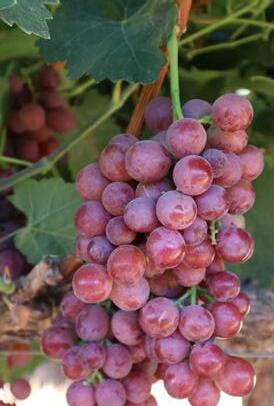
Philippe Rolshausen
Ph.D., Professor of Cooperative Extension, Department of Botany and Plant Sciences, UC Riverside
Anil Shrestha
Ph.D., Professor, California State University, Fresno
Roberto Soto Faculty Member, Universidad Autonoma de Baja California
Tian Tian UCCE Viticulture Farm Advisor, Kern County
Jennifer Valdez-Herrera Graduate Student Researcher, UC Davis
Kirk Van Leuven PCA, CCA
Katherine Waselkov Ph.D., Professor, California State University, Fresno
Eryn Wingate CCA, Board Member, Western Region Certified Crop Advisers
UC COOPERATIVE EXTENSION ADVISORY BOARD
Surendra Dara Director, North Willamette Research and Extension Center
Kevin Day UCCE Pomology Farm Advisor, Tulare and Kings Counties
Elizabeth Fichtner UCCE Farm Advisor, Kings and Tulare Counties
Katherine Jarvis-Shean UCCE Orchard Systems Advisor, Sacramento, Solano and Yolo Counties
Steven Koike Tri-Cal Diagnostics
Jhalendra Rijal
UCCE Integrated Pest Management Advisor, Stanislaus County
Mohammad Yaghmour
UCCE Area Orchard Systems Advisor, Kern County
The articles, research, industry updates, company profiles, and advertisements in this publication are the professional opinions of writers and advertisers. Progressive Crop Consultant does not assume any responsibility for the opinions given in the publication.

September / October 2023
3
www.progressivecrop.com
IN THIS ISSUE 6 16 32
in Crop Performance Do Wider Beds in Fresh Market Onion Production Increase Total Water Productivity? Navel Orangeworm Hullsplit Spray Considerations in 2023 Tips for Managing Vine Nutrition in Vineyards Challenges and Prospects for Biopesticide Discovery 6 16
12 32 28 24 36







JACKPOT C E U YOU HIT THE September 27th - 28th Hosted by: Co-Hosted by: DPR HOURS CCA HOURS 43.5 + = 8.5 12.0 52.0 63.5 51.5 ONLINE ONLINE TOTAL CEU HOURS TOTAL CEU HOURS IN-PERSON IN-PERSON FREE WITHREGISTRATION INCLUDED DPR CEU APPROVED, PENDING FINAL CCA APPROVAL Attendance is filling up fast and this is one conference you don’t want to miss! Get all your CEU for the year at the Crop Consultant Conference! Live Conference and Trade Show with 70+ Exhibits 51.5+ CEU hours Early access 10.0 CEU online First class dining, Mixer and Entertainment In the heart of California CCA of the Year Award by WRCCA and More... Invest in Your Ag Future and Make Critical Connections: 10.0 EARLY ACCESS ONLINEHOURSCEU ONLINEOPEN!NOW Heritage Crop Science, LLC
7:00 AM BREAKFAST & TRADE SHOW
JOINT DPR & CCA TRACK
8:00 AM
Neighborly NOW Program: Getting Connected with Mating Disruption Users
Jesse Roseman, Principal Analyst, Almond Board of California
8:30 AM
Pesticide Roadmap Panel: What Does the Future of Pesticide Use Look Like for California?
Renee Pinel, President/CEO, Western Plant Health Association; Surendra Dara, NWREC Director and Professor, Oregon State University; Roger Isom, President, WAPA; Daniel Hartwig, Director of Sustainability, Woolf Farming
9:30 AM
Industry Talk: Iodine as a Plant Nutrient
Doug Snyder, Business and Marketing Development Manager, SQM North America
10:00 AM TRADE SHOW & BREAK
10:30 AM
Laws and Regs Workshop: What We Learned from Top Pesticide Violations in 2022

Rigo Ceja, Outreach and Training Specialist, Ag Safe
11:00 AM
Industry Talk: Growing Large, High-Quality Fruit Through Nutrition
Jeff Merrit, CEO, Axiom Ag
11:30 AM
Biopesticides: Where Industry Stands
Surendra Dara, NWREC Director and Professor, Oregon State University
12:00 PM LUNCH
Special Guest Entertainment: Jeff Applebaum
DPR TRACK Tackling Pesticide Resistance of Spotted Wing Drosophila
Jhalendra Rijal, UCCE Area IPM Advisor, Stanislaus County
Overview of SensorControlled Sprayers and Sprayer Types
Brent Warneke, Faculty Research Assistant, Oregon State University
Soilborne Diseases in Vegetable and Tomato Row Crops
Tom Turini, UCCE Vegetable Crops Farm Advisor, Fresno County
The Role of Mating Disruption in Vineyard Pest Management
Kent M. Daane, UCCE IPM Specialist, UC Berkeley, Kearney Agricultural Research and Education Center
1:30 PM 2:00 PM 2:30 PM
Thursday, September 28
7:00 AM BREAKFAST & TRADE SHOW
JOINT DPR & CCA TRACK
8:00 AM
Biostimulant Panel: Plant Biostimulant Act Reintroduction
Russell Taylor, Vice President, Live Earth Products; Kirk Van Leuven, CCA/PCA, Stoller USA; Rich Kreps, CCA, SSp., Ultra Gro; August York, CCA, Intuit Ag Consulting; James Henderson, CCA, President, Prime Dirt, Inc.
DPR TRACK Hydrogel Bait for Sugar-Feeding Ants in Vineyards
David Haviland, UCCE Area IPM Advisor, Kern County
9:00 AM
CCA TRACK
Groundwater Recharge On-Farm vs InfrastructureLarge-Scale
Eryn Wingate, Agronomist, Tri-Tech Ag Products
9:30 AM
Industry talk
Multicolor Ecological Agriculture Inc.
10:00 AM TRADE SHOW & BREAK
11:00 AM
Preparing for Disease in Future Cool, Wet Years
Themis Michailides, Plant Pathologist, UC Davis
Citrus Red Scale: Research Updates, How This Year's Weather Affected Insect Generations
Capturing Runoff with Product Technology Eileen Bernard, Adjuvants Manager, Nutrien Ag Solutions
11:30 AM
Sandipa Gautam, UCCE Area Citrus IPM Advisor, Tulare County
CCA TRACK Regenerative Almond Management
Jessica Chiartas, Ph.D., California Soil Resource Lab, UC Davis
Almond Carbon Footprint and Soil Health
Devin Clarke, Permanent Crop Manager, Yara International
Nutrition and Soil Health Panel
Karl Wyant, Director of Ag Science, Nutrien; JW Lemons, Account Manager, Verdesian; Jerel Kratt, CEO, Regenerative Crop Consulting, Inc.; Matt Comrey, South Sacramento Valley Sales Manager, Wilbur-Ellis
PM 3:30 PM TRADE SHOW & BREAK 4:30 PM
Bringing Fresh Perspectives to Combat Lettuce Disease
Kirsten Pearsons, UCCE IPM Advisor; Yu-Chen Wang, UCCE Plant Pathology Advisor, Santa Cruz, Monterey and San Benito counties
Continued Soil pH Nutrient Availability Table: Where did it come from and how to use it?
Danny Klittich, Director of Agronomy, Mission Produce, Inc.
PM
Stress Management in Agronomic Crops in the South West Phil Frost, Technical Development Manager, Verdesian Life Sciences
12:00 PM LUNCH
Presentation of WRCCA’s CCA of the Year award, Scholarships and Honorariums
1:00 PM Industry Talk
Heritage Crop Science, LLC
1:30 PM
Beet Leafhopper Management in Processing Tomatoes
Zheng Wang, UCCE Vegetable Crops and Irrigation Advisor, Stanislaus County
2:00 PM
Personal Protective Equipment Required by Labels for Employees and Owners
Judy Brant, Agricultural Inspector, Tulare County Ag Commissioner Office
2:30 PM ADJOURN
Register Today:
September / October 2023 www.progressivecrop.com 5
Thursday, September 28
Wednesday, September 27
MIXER
3:00
5:00
Groundwater Banking on California Croplands
 By ERYN WINGATE | CCA, Board Member, Western Region Certified Crop Advisers
By ERYN WINGATE | CCA, Board Member, Western Region Certified Crop Advisers

California relies heavily on groundwater, with 40% of annual demand supplied by aquifers during non-drought years and upwards of 60% during dry years. Approximately 83% of people in California receive part of their annual supply from groundwater, and many communities are exclusively reliant on well water for both ag and domestic purposes3. Chronic groundwater overdraft, estimated at 2 million acre-feet per year since the 1960s, leaves California communities and farmland vulnerable to water shortages and rising surface water and pumping costs1.
Groundwater depletion also causes subsidence, or land sinkage, as dry aquifers collapse. Subsidence damages infrastructure, such as roads, powerlines, pipes and canals. The California Aqueduct’s flow capacity has reduced due to increasing subsidence rates, with some areas surrounding the infrastructure sinking almost 1.25 inches per month4. Groundwater recharge efforts have begun to reverse subsidence in some regions, but aquifer degradation and sunken land is often irreversible, and recharge efforts fail. The collapsed aquifers are irreparably damaged and can no longer store water.
California experienced the worst drought on record from 2012 to 2015,
exacerbating groundwater pumping overdraft, water shortages and subsidence. Recharge during rainy years does not replenish the loss, and between 2010 and 2020, roughly 28% of monitored wells in California declined by 5 to 25 feet 3,6,8. State officials responded by passing the Sustainable Groundwater Management Act (SGMA) in 2014 to bring pumping and recharge into balance by 2040. Local groundwater sustainability agencies, tasked with developing recharge implementation plans, will likely include Agricultural Managed Aquifer Recharge (AgMAR) to meet requirements and balance the groundwater pumping budget7
On-farm groundwater recharge methods include winter flooding, skipped row flooding, subsurface reverse tile drainage, recharge ponds and unlined canals or irrigation ditches. Traditional recharge methods like drainage basins require land dedicated solely to water percolation, limiting groundwater banking with high infrastructure construction costs and spatial constraints. Winter surface flooding on irrigated agricultural land can be implemented widely at low cost and with few infrastructure or management changes at the field level. With 5 million acres of California farmland suitable for AgMAR, groundwater banking can scale
up dramatically if even a small percentage of acreage can dually purpose for recharge during rainy years3,6
University research and early commercial implementation on orchards, vineyards and other crops indicate AgMAR can effectively recharge aquifers and benefit production in multiple ways3,5,6,7. AgMAR helps growers and landowners secure irrigation water availability for dry years while preventing further aquifer degradation and subsidence. When properly managed, recharge efforts can also improve soil quality by leaching excess salinity below the root zone. Well water quality also improves when clean stormwater dilutes nitrate and total dissolved solids (TDS) accumulated in the basin after years of ag chemical leaching and pumping overdraft. Better soil and irrigation water quality improve crop health and fertilizer use efficiency, leading to lower production costs or increased yield and crop quality.
Implementation
Growers and landowners implementing AgMAR must consider soil suitability for recharge, crop tolerance, water application timing and field management practices to protect both crop health and groundwater quality. Research and field studies conducted over the
6 Progressive Crop Consultant September / October 2023
ContinuedonPage8
On-farm groundwater recharge methods include winter flooding, skipped row flooding, subsurface reverse tile drainage, recharge ponds and unlined canals or irrigation ditches (photo courtesy Almond Board of California.)





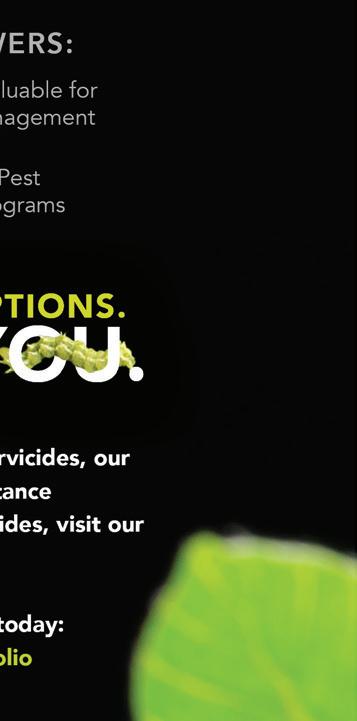


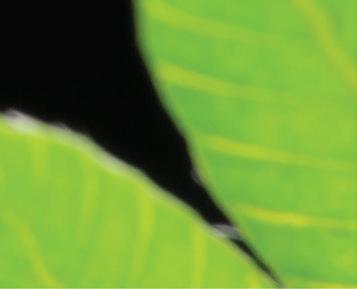

September / October 2023 www.progressivecrop.com
ContinuedfromPage6
last 10 years can guide site selection and implementation, but land managers must evaluate their own soils and crops to adjust AgMAR protocols to fit the unique conditions at each ranch.
Site Selection

The Soil Agricultural Groundwater Banking Index (SAGBI), developed by Toby ‘O Geen and collaborators at UC Davis, provides a scoring system to determine farmland’s suitability for AgMAR6. SAGBI assigns scores in five categories, including deep percolation, root zone residence time, topography, chemical limitations and soil surface

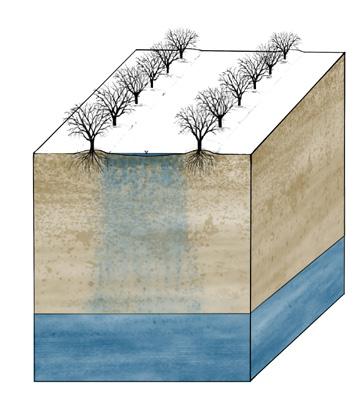
condition. The weighted average of scores in all categories is used to classify ag land as Excellent, Good, Moderately Good, Moderately Poor, Poor or Very Poor for agricultural groundwater banking. The best ground for recharge is on flat land with sandy or sandy loam soils. Ideally, the soil should have fast water penetration and infiltration, and little to no chemical limitations such as high salinity, nitrates or pesticide residue that could contaminate groundwater if leached into the basin6,8.
Over 17.5 million acres of farmland in California have been scored using data from the USDA-NRCS Soil Survey Database, and 5 million acres were rated as

Excellent, Good or Moderately Good for AgMAR. Most of the land suitable for recharge is found in the eastern Central Valley as well as some locations in Santa Maria, Salinas and Napa6.
Land managers can look up their ground’s SAGBI score on UC Davis’ web-based mapping app at casoilresource.lawr.ucdavis.edu/sagbi/. Recharge suitability indicated by SAGBI scores should be verified on the field level by soil testing and site evaluation prior to AgMAR implementation.
Crop Suitability
Crop suitability for AgMAR depends on tolerance to soil saturation, crop value and financial risk, and likelihood of nitrate leaching due to typical fertilization patterns. Groundwater banking on agricultural lands is safest during winter dormancy or when fields are fallow. Surface applications typically flood the field with 6 to 8 inches of water that drains in a week or less depending on soil permeability2,3,5. Oxygen levels in the soil decline due to standing water, and if saturation persists for too long, the crop’s roots may be harmed. Stressed and damaged root systems cannot absorb water and nutrients effectively, resulting in yield decline later in the season. Damaged roots are also more vulnerable to soilborne diseases such as phytophthora and fusarium, so fields with known disease pressure may not be good candidates for recharge5,7. Growers can avoid root damage and
8 Progressive Crop Consultant September / October 2023
Recharge methods from left to right: surface application to orchards, subsurface application to orchards and basins/water conveyance structures (illustrations by Jennifer Natali, courtesy Almond Board of California.)
Areas of soil suitability for groundwater banking in California taken from UC Davis web-based application. The application uses the Soil Agricultural Groundwater Banking Index to score specific farmland suitability.
even improve soil health by choosing appropriate fields and planning surface application to match soil drainage rates and crop tolerance thresholds.
Crops suitable for AgMAR include alfalfa, wine grapes, tomatoes, almonds and other tree nuts. Annual cropping fields can also be used for recharge during the fallow period between plantings. Alfalfa presents a good candidate for recharge because its relatively low value poses less financial risk compared with specialty crops if recharge damages production. AgMAR field experiments with alfalfa found no decline in root health or yield after winter flooding on well-draining soils, demonstrating growers can safely carry out recharge programs if the crop is in its dormant stage. Since alfalfa is sensitive to soil saturation during the growing season, researchers suggest rotating recharge sites to older crops scheduled for replanting the following year, especially if flooding events are expected in late winter or early spring3,7
Trees and vines are excellent candidates for groundwater banking, if flooded during winter dormancy, well before budbreak. Crop sensitivity to water logging varies with rootstock, but growers are advised to limit standing water duration to two days to avoid root damage. Wine grapes are fairly tolerant to soil saturation, and since they typically receive less nitrogen fertilizer than other crops, residual nitrate levels during the winter are low. Tomatoes, almonds and other tree nuts generally receive higher nitrogen application rates, posing greater risk to groundwater quality if excess nitrate leaches during flooding events. Low nitrate levels and saturation tolerance position vineyards as the safest crop candidate for recharge, but groundwater banking will be more effective if implemented on the state’s vast almond acreage as well5,8 .
UC Davis research funded in part by the California Almond Board demon strated AgMAR efficacy on two com mercial almond orchards in the Central Valley from 2015 to 20175. Researchers applied a total of 24 inches of water per year, split into multiple flooding
events during winter dormancy for two consecutive years. One of the orchards, located near Dehli, Calif., has highly permeable, sandy soil. The second orchard, located in Modesto, has moderately permeable, sandy loam soil. Flood water at both locations percolated below the root zone in less than a week, and researchers found no negative impacts on tree water status, root health or yield at either site. Winter flooding proved an efficient recharge method, with over 90% of applied water percolating below the root zone on the sandy soil
and over 80% percolation on the sandy loam. Similar studies on pistachios, wine grapes and tomatoes also resulted in effective groundwater banking while maintaining root health and productivity2,3,5
California almond growers have begun implementing AgMAR on their own orchards with promising results. Mark McKean, a prominent grower in the Fresno area, began testing flood irrigaContinuedonPage10
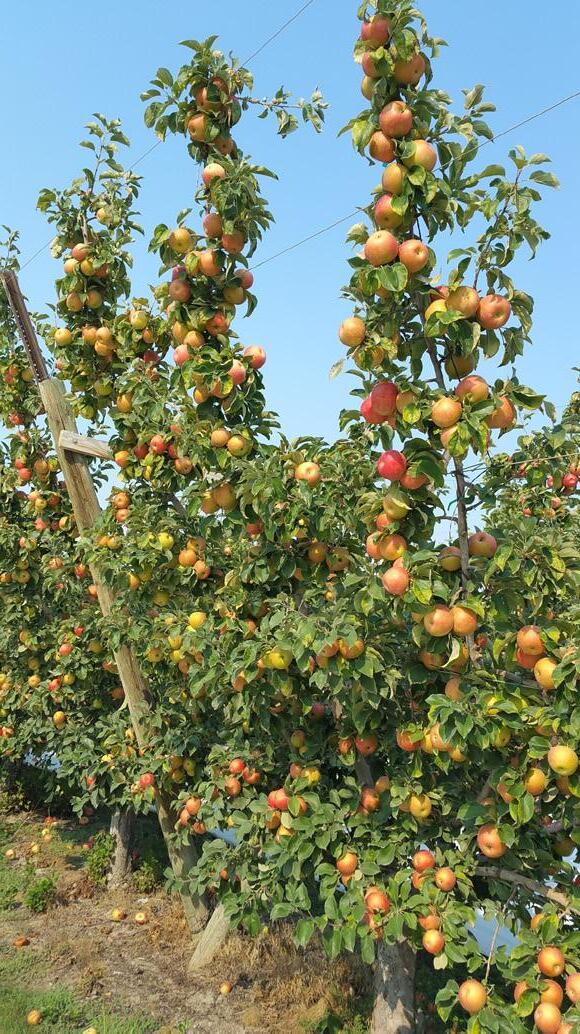
Provides Calcium and Chitin from Crab, complexed with amino acids from fish.
Pacific Gro helps growers improve soil health and improve nutrient uptake for better crop performance.

Crop resilience against disease and pest pressure can be achieved with a biological program and balanced nutrition.

September / October 2023 www.progressivecrop.com 9
www pacificgro com 503-867-4849
tion and recharge in 2010, and by 2020 he had experimented with groundwater banking on 350 acres. In 2016, McKean banked 2 ac-ft/ac and in 2019 1.4 ac-ft/ ac on a three-year-old almond orchard. McKean found better percolation when flood water was applied for short durations rather than one long set, and he reduces his fall nitrogen application rate on fields slated for winter recharge to prevent excess nitrate leaching below the root zone7.
Other growers have installed subsurface groundwater banking systems to pump recharge water below the root zone and bypass the risk posed by surface flooding. Diverted stormwater or other source water is piped down to a reverse tile drain system at least 8 feet below the soil surface. Several subsurface systems have been installed in the Central Valley since they were introduced in 2017, and some water districts offer incentives programs to help cover the costs. Subsurface recharge systems are expensive to install, but they facilitate high recharge volumes without impacting roots and crop health7

Water Quality Considerations
Groundwater banking on ag lands has the potential to significantly improve water resource security in California, but AgMAR poses a risk to groundwater quality if excess salts, nitrates and other residual contaminants are leached down to aquifers. Preliminary soil testing can assess field suitability for recharge
before each rainy season, and sites with excess nitrate, salinity or pesticide residue may be passed up in favor of sites with optimum chemical characteristics. Fields with higher residual contamination may still be good candidates for recharge if enough clean stormwater is available to dilute nitrate and salinity down to safe drinking water quality standards. Growers can also prepare for winter recharge by reducing the proportion of annual nitrogen fertilizer applied in the fall.
Residual contaminants in the vadose zone, the unsaturated area between the soil and the groundwater table, may also pose a risk to groundwater quality. Salts, nitrate and ag chemicals accumulated in the vadose zone after years of commercial agriculture may be mobilized by high-volume recharge events and leach down to the groundwater basin. Hannah Waterhouse and colleagues at UC Davis analyzed soil core data down to 30 feet on 12 fields in the Kings groundwater basin to quantify potential risk of nitrate and salt contamination to aquifers8. The study compared the effects of soil permeability, crop type and fertilizer management on nitrate and salt accumulation in topsoil and below. Fields with lower water infiltration rates had higher nitrate and salinity levels compared with more permeable ground. Soils with slower water infiltration rates stored on average 732 lbs N/ac while lighter, well-draining soils stored 542 lbs N/ac within the 30-foot profile8 Information gleaned from this study and other research can help determine the source and volume of water required for recharge at each site to ensure that leached contaminants are sufficiently diluted to protect well water quality.
received split N applications, the field with unusually high residual nitrate received the entire year’s N supply in one shot at the beginning of the season, demonstrating management’s strong impact on nitrate leaching8. Regardless of crop type, growers implementing AgMAR can protect underlying groundwater by testing the soil’s N level in fall and adjusting fertilizer management to prevent nitrate leaching.
Groundwater quality monitoring and collaboration between growers, researchers and water agencies will help to safely implement AgMAR and improve recommendations to meet differing requirements at each ranch. Further research is required to understand how the vadose zone’s characteristics will impact groundwater quality in response to AgMAR, but initial studies indicate that the benefits of recharging our groundwater basins outweigh the potential risks when appropriate sites and field management strategies are implemented.
When properly managed, recharge efforts can also improve soil quality by leaching
Crop type and grower management also strongly affected nitrate and salinity levels. High nitrogen application rates on tomatoes and almonds were reflected in the soil profile, while wine grapes with lower N applications and deep root systems almost always contained the lowest nitrate levels. Elevated residual nitrate found on one outlier vineyard was explained by the grower’s fertilizer management. While other wine grapes
Average groundwater overdraft in California is estimated at about 2 million acre-feet per year, and from 2005 to 2010, the Central Valley alone overdrafted an estimated 1.1 to 2.6 million acrefeet1,6. Pumping restrictions required by SGMA may cause between 750,000 and 1 million acres of agricultural lands to go fallow without new supply mitigation measures7. Agricultural lands rated as Excellent or Good by SAGBI can percolate an estimated 1 foot of water per day, and if AgMAR were implemented on suitable wine grape acreage in the Central Valley, growers could bank 460 million acre-feet of water per day 6,8 . AgMAR implementation at scale will require supply rights and infrastructure to divert excess stormwater to agricultural fields, but SGMA funding and compliance deadlines will likely motivate stakeholders to facilitate on-farm groundwater recharge efforts. Thousands of acres of wine grapes, almonds, alfalfa and tomatoes are planted on land suitable for groundwater banking, giving growers an opportunity to secure water resources for future crop production and their communities.
10 Progressive Crop Consultant September / October 2023
ContinuedfromPage9
excess salinity below the root zone (photo courtesy Almond Board of California.)
269.6 LBS/A average increase with the addition of 16 fl oz X-Cyte for 5 applications beginning at petal fall.

X-Cyte™ is a cytokinin product formulated to mitigate abiotic stress to maximum yield. Studies developed over the last five years have shown a significant yield increase when using X-Cyte compared to the grower standard practices. X-Cyte™



Westley Selma Westley Westley Terra Bella Westley Westley 5,000 4,000 3 000 2,000 1,000 0
A Corteva Agriscience Business
It's Time to Get X-Cyted!
Scan the QR code to learn more L B S N U T / A Marketable Yield per Acre 2018 2019 2019 2020 2022 2 , 4 2 8 0 2 , 6 8 4 2 2 , 3 7 6 2 2 , 5 5 2 2 2 , 0 4 5 3 2 , 2 5 5 7 3 , 8 1 8 7 4 , 2 0 6 5 2 , 5 0 2 8 2 , 8 7 4 5 1 , 3 9 0 7 1 , 5 9 1 5 2021 2021 2 , 8 7 8 7 3 , 1 6 2 8 Grower Standard Practices 16 fl oz X-Cyte + Grower Standard Practices
your almonds for higher yield.
New Instances of Herbicide Resistance in California Small Grain Crops
 By NICK CLARK | UCCE Agronomy Advisor, Kings, Tulare and Fresno counties, ANIL SHRESTHA | Ph.D., Professor, California State University, Fresno, JENNIFER VALDEZ-HERRERA | Graduate Student Researcher, UC Davis, and KATHERINE WASELKOV | Ph.D., Professor, California State University, Fresno
By NICK CLARK | UCCE Agronomy Advisor, Kings, Tulare and Fresno counties, ANIL SHRESTHA | Ph.D., Professor, California State University, Fresno, JENNIFER VALDEZ-HERRERA | Graduate Student Researcher, UC Davis, and KATHERINE WASELKOV | Ph.D., Professor, California State University, Fresno
Small grain cereals (wheat, triticale, rye, oats and barley) are planted each year in California on about 550,000 acres from the northern border near Oregon to the southern border near Mexico. These versatile crops can be harvested as grain, straw, hay, green-chop or silage. Today, much of the small grain cereals grown in California are used for dairy cattle feed. Dairy sales topped $7.6 billion in 2021, 14.8% of the state’s crop cash receipts.
Crop yield and quality reduction from weeds is a major concern of small grain producers. From 2015-19, PCAs recommended herbicides on an average of 941,000 small grain acres/year. Many fields were treated more than once for weed control (de Souza Dias et al. 2021). During this period, the most common herbicide modes of action on applied acres were acetolactate synthase (ALS) inhibitors (37.8%), synthetic auxins (31.8%) and protoporphyrinogen oxidase (PPO) inhibitors (17.7%). Major concerning weeds in California small grain crops include littleseed canarygrass (Phalaris minor), Italian ryegrass (Lolium multiflorum), shepherd’s-purse (Capsella bursa-pastoris), London rocket (Sisymbrium irio), mustards (Brassica spp.), little mallow/cheeseweed (Malva parviflora), coast fiddleneck (Amsinckia menziesii var. intermedia), burning nettle (Urtica urens) and common chickweed (Stelleria media).
In 2021, concerns from PCAs in the southern San Joaquin Valley became urgent as they noticed a pattern of failures
to control common chickweed (escapes) several years in a row. Some fields were becoming overgrown with the weed (Figure 1).
An Emerging Problem
As PCAs and pesticide product representatives noticed some ALS inhibitor herbicides weren’t working as well as expected to control common chickweed in small grains, they conducted field trials and reached out to UCCE Farm Advisors Nick Clark and Jose Dias and Specialist Brand Hanson. In 2021 when it was too difficult to dismiss the repeated escapes

as mistakes in applications or poor environmental conditions, several UCCE Farm Advisors gave more attention to fields with escapes and conducted early evaluations attempting to repeat results PCAs and product reps saw in their trials.
The PCAs were concerned they were seeing effects of herbicide resistance. This is a genetic phenomenon occurring naturally as weeds are challenged to live when exposed to herbicides. Genetic variation in the weed population gives
12 Progressive Crop Consultant September / October 2023
ContinuedonPage14
Figure 1. Herbicide-resistant common chickweed grows unscathed to the top of the triticale canopy in this field after it was treated with ALS inhibitor herbicide (all photos by N. Clark.)
Figure 2. Early results from a replicated field trial could not rule out the possibility of ALS inhibitor herbicide genetic resistance in common chickweed found in triticale in the southern San Joaquin Valley. “UTC” means “untreated control.” Skinny bars represent one standard deviation. Treatments under similar lowercase letters are not significantly different from each other according to Tukey’s HSD test (a= 0.05).
Harness the Power of Ancient Sunlight
Welcome to Huma®. Inspired by one of the earth’s most precious resources, humus, we harness the power of ancient sunlight through humate-based products to vitalize life in soil and crops. Formerly known as Bio Huma Netics®, we have united our company name and our brands, Huma Gro®, Fertilgold® Organics, and Mesa Verde Humates®, under Huma®: a name that reflects the power and nurture of Mother Nature. We invite you to experience our humic solutions with a human touch. For more information visit: Huma.us or call us at 480-961-1220
Humic Solutions with a Human Touch ®

some individuals natural resistance to the damaging effects of the herbicide. The problem arises when the same herbicide is used repeatedly, and those naturally resistant individuals continue to reproduce and become dominant in the weed population.
The diligence of these PCAs is the reason the broader ag community alerted early to this potentially serious problem.
Early Warning Grows into Full-Blown Research
Early testing in a field with high common chickweed pressure and documented escapes from ALS inhibitors showed Clark, Dias and Hanson that herbicide resistance could not be ruled out as a potential cause of the escapes. In that field, Clark and Dias applied tribenuron methyl (Dupont Express Herbicide with Totalsol Soluble Granules) and pyroxsulam (Simplicity CA), two frequently used ALS inhibitors in California, at two and four times the highest allowable label rate. Clark and Dias observed that tribenuron slightly reduced the common chickweed growth and pyroxsulam had virtually no effect when compared to an untreated control (Figure 2, see page 12). This evidence warranted more intensive studies on common chickweed populations with ALS inhibitor escapes. Clark partnered with California State University, Fresno Professor Anil Shrestha to conduct controlled environment trials. These were designed to learn whether these weeds were resistant to ALS inhibitors.
Seeds were collected by Clark and technicians Ben Halleck (UCCE) and Walter Martinez (Tulare County) from common chickweed in ALS inhibitor escape fields and an organic field where there was no recent ALS inhibitor application. The organic seeds were ALS inhibitor susceptible controls because their population was not pressured to evolve resistance. The weed seeds were planted in pots in a greenhouse and grown under a shade structure at Fresno State until they reached the ideal growth stage for ALS inhibitor control. After several experiment repetitions, Clark, Shrestha and
Fresno State students Paola Vidales, Kiera Searcy and Jennifer Vidales confirmed what PCAs worried about. The common chickweed identified as ALS inhibitor escapes was in fact genetically resistant to tribenuron methyl and pyroxsulam (Heap 2023).
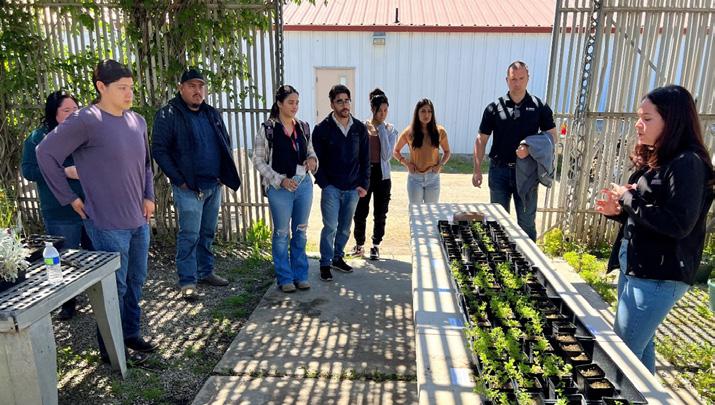
The UCCE and Fresno State team observed that the ALS inhibitor resistant common chickweed responded to increasing doses of pyroxsulam but not to tribenuron methyl. When the dose of pyroxsulam was increased up to eight times the max label rate, the treated common chickweed became more stunted and more of the plants died. Because the plants were not controlled with the maximum allowable rate, they are considered resistant. When using tribenuron methyl, the common chickweed plants sprayed with eight times the max allowable label rate appeared the same and survived as much as plants sprayed with half the label rate. Many of the plants survived the herbicide applications and eventually flowered, suggesting they may be reproductive.
The UCCE and Fresno State team held public field days at Fresno State. Product reps, PCAs and students gathered to observe the results of the study (Figure 3). The value of the field day was two-fold:
1) ag professionals and students learned
about the confirmation of common chickweed populations in California that are genetically resistant to ALS inhibitors, and 2) the research team gleaned important insights from the ag professionals’ feedback. That feedback has been critical in guiding ongoing research.
Future Directions
The two different responses between the herbicides gave clues to the researchers about the ways the plants were expressing resistance to the herbicides. Fresno State professor Katherine Waselkov, specializing in genetics of herbicide resistance, joined the team to begin exploring the genetic basis of this problem in California. The major question Waselkov is researching is whether the Central Valley populations of chickweed showing resistance to ALS inhibitors have mutations in the ALS gene, which codes for the enzyme targeted by the herbicides. By extracting DNA, conducting PCR and sequencing the entire ALS gene, the lab can detect possible resistance mutations that occur in this enzyme. Changes in several amino acids that directly interact with the herbicides are likely to cause resistance. These changes have been detected in other countries’ chickweed infestations (Marshall et al. 2010; Laforest and Soufiane 2018). Waselkov’s different approach will also screen for other less common mutations that could cause resistance.
14 Progressive Crop Consultant September / October 2023
ContinuedfromPage12
Figure 3. Fresno State Masters student Jennifer Valdez-Herrera (right) teaches field day attendees about the findings of ALS herbicide resistance in common chickweed populations found in the southern San Joaquin Valley with real-life demonstrations of these weeds surviving various ALS inhibitor herbicide applications.
Pyroxsulam and tribenuron methyl are not the only ALS inhibitor herbicides used in small grains. Industry professionals pointed out mesosulfuron-methyl (Osprey Herbicide), although used less commonly, is also regularly applied to small grains. Additionally, it was pointed out that small grain fields where common chickweed was resistant to ALS inhibitors were recently rotated out of or into alfalfa, a common rotation partner, where multiple ALS inhibitor herbicides are applied to control several important weeds. For these reasons, the UCCE and Fresno State team continues to expand the controlled environment study to determine the presence of ALS inhibitor resistance in common chickweed with more herbicide products.
Fresno State Masters student Jennifer Valdez-Herrera is earning a degree in plant science through further study into ALS inhibitor resistance in common chickweed in California. Studying under Shrestha, Waselkov and Clark, Valdez-Herrera is addressing all the issues
above in addition to studying the impact that uncontrolled common chickweed has on yield and quality of small grains.

Growers and PCAs are apt to point out ALS inhibitors are a very important tool for controlling multiple serious weeds in small grains and alfalfa. Further, there are still several other herbicide modes of action registered for California small grains and alfalfa which have activity against common chickweed. The PCAs are the first line of defense in the field and the first consultants for knowledge about how to remedy weed problems. Our team continues to consult PCAs to guide future research endeavors in this field to make sure the solutions we seek are relevant and applicable to the industry.
References
Dias, J. L. C. dS., Clark, N., Mathesius, K., Light, S., Hanson, B., Lundy, M. E., Shrestha, A., 2021. Poor control of common chickweed with ALS-inhibitor herbicides reported in multiple small grain fields in the southern San Joaquin Valley. Is
it a new case of herbicide resistance in California? UC Weed Science Blog. Retrieved 7/28/23, https://ucanr.edu/blogs/blogcore/ postdetail.cfm?postnum=50181.


Heap, I., 2023. The International Herbicide-Resistant Weed Database. Retrieved 7/28/23, http://weedscience.org/Pages/ Case.aspx?ResistID=24253.
Laforest, M., and B. Soufiane. 2018. Coevolution of two sulfonylurea-resistant common chickweed (Stellaria media) biotypes with different mutations in the acetolactate synthase gene. Weed Science 66: 439-445.
Marshall, R., R. Hull, and S. R. Moss. 2010. Target site resistance to ALS inhibiting herbicides in Papaver rhoeas and Stellaria media biotypes from the UK. Weed Research 50: 621-630.
Comments about this article? We want to hear from you. Feel free to email us at article@jcsmarketinginc.com
Make EVERY Drop Count!
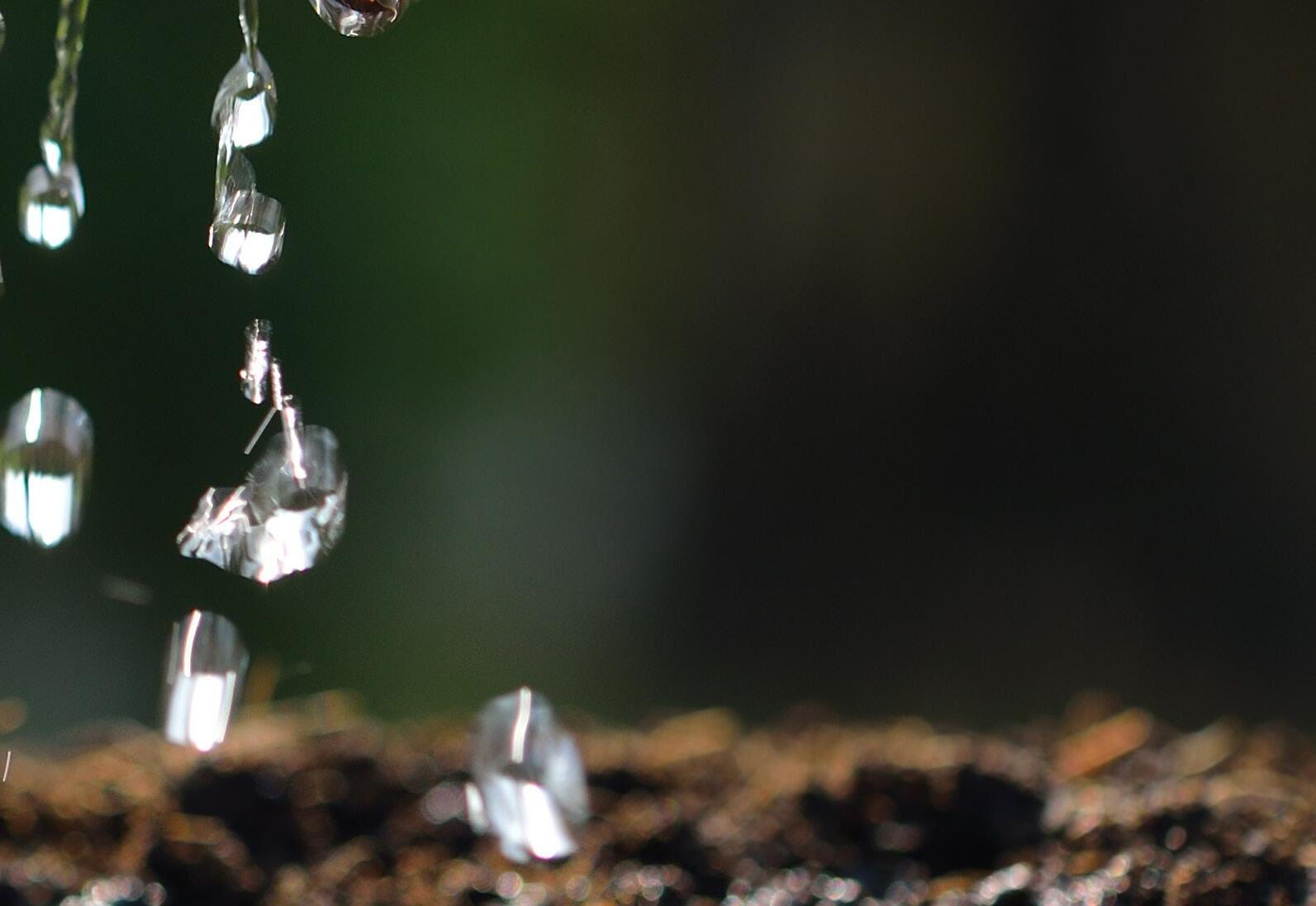
September / October 2023 www.progressivecrop.com 15
Whether it comes from rain, snow or irrigation, INTEGRATE ® 80 + gets water where it needs to go! For Information, visit www.belchimusa.com or Contact Laura Crawford • California PCA #143026 Cell: (310) 967-9949 email: Laura.Crawford@belchim.com
Stop by our booth at the Crop Consultant Conference September 27-28, 2023!
Photos show the effect of untreated water (left) and water treated with Integrate 80+ (right); 75 minutes after it was applied to water repellent soil.
BIOSTIMULANTS AND THE ROLE OF CYTOKININ IN CROP PERFORMANCE
By KIRK
Biostimulant products come from things existing in nature which are useful as solutions to agricultural problems. They are seen as ways to meet challenges in nutrient use efficiency, managing crop stresses and arriving at the end goal of improving crop yield and quality.
These products have created some tension in the agricultural community, particularly around regulatory requirements because they don’t fit squarely into either of the two traditional crop input categories. They’re not fertilizers and they’re not pest control chemicals. The crop input industry is organized around these historical categories. So where do biostimulants fit in and how do we begin to understand how to work with them?
Admittedly, overreliance on fertilizers and chemicals creates several problems for agriculture. With yield and quality being the goal of everyone involved, biostimulants can supplement vigor and

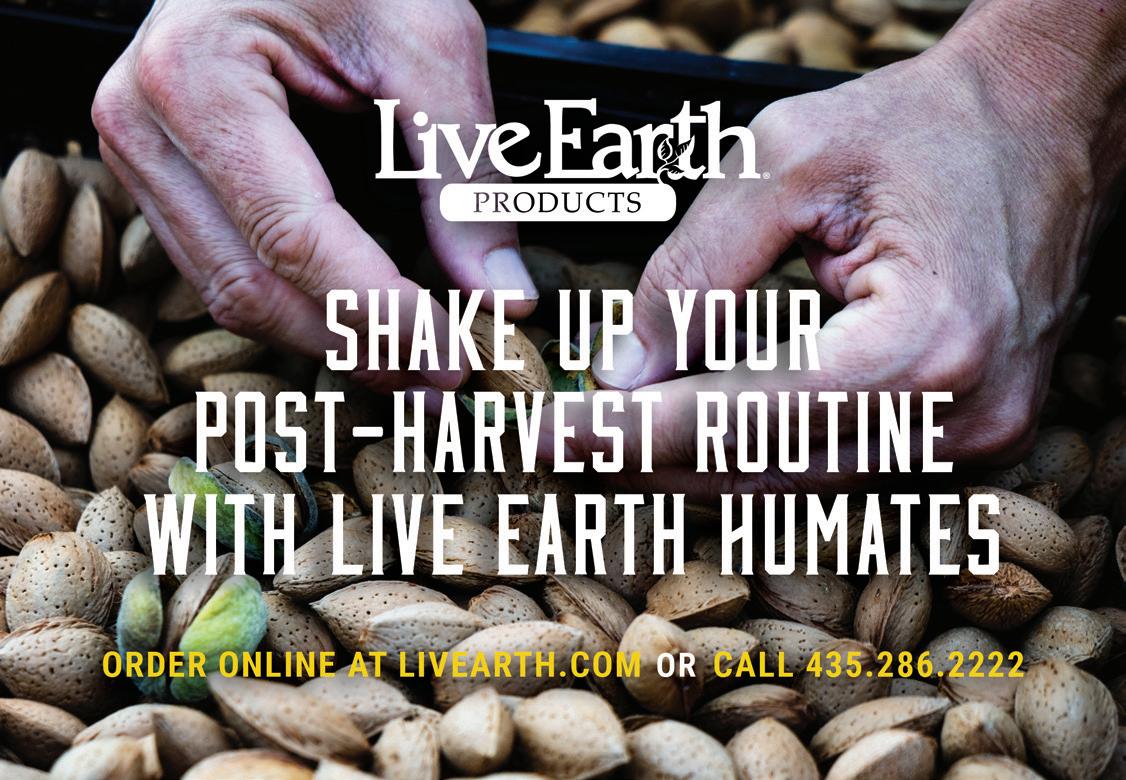
16 Progressive Crop Consultant September / October 2023
VAN LEUVEN | PCA, CCA
Citrus leaf senescence caused by magnesium deficiency manifests when cytokinin and chlorophyll are oxidized out of leaves (all photos courtesy K. Van Leuven.)
crop resilience and improve yield and quality while reducing the environmental load of potentially harmful materials.



The newer science of molecular biology helps us to understand what goes on in the machinery of a plant as it reacts to its environment. Depending on conditions and the availability of nutrients and other essentials, the plant’s genetic code conducts its commitment to growth, using polarity and gravity as directional forces. Von Liebig understood 200 years ago how nutritional shortages could limit yield. What we understand now is that nutrition is only part of the equation. We can have soil nutrient levels at optimum and still have growth stalled out if other requirements are not met. At the center of it all is the genetic code. The rate of growth depends on signaling by hormones and the activation of genes inside the plant as it senses conditions around it. Gene activity is increased, or suppressed, in response to nutrient status and other factors like hormone concentration and environmental conditions. It has been estimated that over 30% of all the genes in higher plants have something to do with hormones.
Cytokinin in the Plant
One category of biostimulants is products which contain natural hormones like plant extracts and seaweed. The growth hormone cytokinin (CK) is an active component in some of these products. In the plant, the level of available CK can be increased in two different ways: stimulating synthesis of larger amounts of natural CK or adding exogenous applications of CK-containing materials. Applications of CK-containing seaweed products have become mainstream over the last 40 years. This can help with several plant processes at various stages of growth.
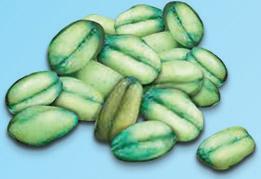
Natural systemic CK is produced primarily in the meristematic zones of the roots and apical growth points and is needed for cell division and other processes throughout the growth cycle. It is needed for ongoing formation of all tissue and controls the size and shape
Ground squirrels distracting you from your daily to-dos? Minimize the squirrel moments with Rozol Ground Squirrel Bait.*
September / October 2023 www.progressivecrop.com 17
WE HAVE YOUR BACKS, BARNS AND BOTTOM LINES. *Rozol ground squirrel bait is a restricted use pesticide
FIRST THING I’VE GOT TO DO IS SQUIRREL. AND THEN I’VE GOTTA SQUIRREL. AND AFTER SQUIRREL, I NEED TO SQUIRREL.
REGISTERED FOR USE IN CALIFORNIA ContinuedonPage18
Almonds treated with foliar cytokinin on the right are consistently larger and heavier.
‘It’s well-established that the quality and size of fruits and nuts are improved by higher levels of [cytokinin] for cell division at fruit set and the early growth stages afterward.’
ContinuedfromPage17
of leaves, as well as the how the leaves are arranged on a stem. Whether plants grow from a crown or from a stock or
trunk they benefit from higher CK levels. CK determines the number of cells and potential size of a leaf. For crops
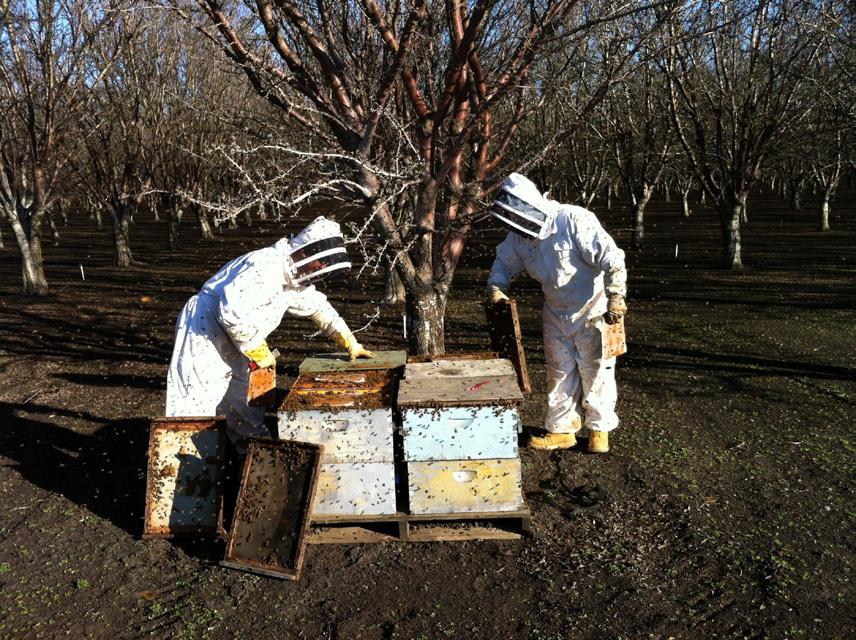

like leafy vegetables, the size, quality and shelf life of the crop rely on a constant supply of CK during growth. CK is the hormone associated with holding back leaf senescence and is known as the juvenility hormone.
CK also regulates chlorophyll synthesis in the leaves, and increased CK is known to improve photosynthesis. When we think about the influence that cell division also has on the size of the leaves, we realize CK is essential to the overall photosynthetic capacity of the plant. Photosynthesis is also supported longer in the growing season with senescence delayed by higher CK levels. We will also discuss the role that CK has in the transport of sugars to other parts of the plant. CK is important for plant processes and growth throughout the plant’s life cycle.
Besides the meristematic zones of the roots and apical tips, there is another place in the plant where CK is produced
ContinuedonPage22
18 Progressive Crop Consultant September / October 2023
HEALTHY BEES = HEALTHY YIELD Give us a call today! Steve 209.202.8915 or 530.604.2151 or shousebee@gmail.com | Lele 209.404.2651 or lelemachadohicks@gmail.com We will help you increase your yields this year! Quality pollination services from Red Blu ff to Bakersfield. Maximize the pollination process with healthy, strong and active hives. • Two-story “double deep” quality hives • Hive inspections throughout pollination season • Extra hives in case of emergencies • Auto CAD map showing placements of hives • Strong 8-frame average plus hives • More than 30,000 hives available almondbeepollination.com
Leaves and nuts on cytokinin treated almonds are uniformly larger and more photosynthetic with less senescence observed.

800-868-6446 | VLSCI.COM Important: Always read and follow label use directions. All TM/R © 2023 Verdesian Life Sciences. All rights reserved. The Nutrient Use Efficiency People.® Most people don’t see the amount of recommendations that go into a crop each year. But the time you put in is more than a simple decision. At Verdesian Life Sciences, we understand – that’s why we offer a full portfolio of yield-pushing solutions from seed treatments and fertilizer enhancers to nutrients and biostimulants. Talk to your retailer about how solutions from Verdesian Life Sciences can help maximize your profits through plant health. Advisors’ at the Crop Consultant Conference in Visalia September 27-28! Refreshments, conversations, and a sweepstakes to boot... COME SEE US WinBootsGeorgia Gift Card!





NOVEMBER 2, 2023 4PM - 8PM JASON SCOTT CEO OF JCS MARKETING, INC. YOU’RE INVITED TO THIS ONCE IN A LIFETIME EVENT JESSE WATTERS CO-HOST OF FOX NEWS KEYNOTE SPEAKER EVENT HOST INTERNATIONAL AGRI-CENTER 4500 S LASPINA ST, TULARE, CA 93274 MYAGLIFE.COM/MYAGNITE SCAN THE QR CODE OR VISIT FOR MORE INFORMATION FEATURING THE CO-HOST OF FOX NEWS JESSE WATTERS SEATING IS LIMITED AND WILL SELL OUT STARTING AT $150 PER PERSON AGENDA MIXER / TRADE SHOW - 4PM - 6PM GOLDEN HARVEST GALA DINNER - 6PM - 7PM KEYNOTE - 7PM - 8PM MIXER AND TRADE SHOW IN THE FARM CREDIT BUILDING GALA DINNER AND KEYNOTE SPEAKER IN THE CORTEVA BUILDING AG MARKETING SOLUTIONS POWERED BY
Fox News Host to Headline My Ag Nite Event in Tulare
Political commentator and Fox News co-host, Jesse Watters, will be the headliner at a premiere ag event coming to the heart of the Central Valley on November 2. My Ag Nite, hosted by Jason Scott, CEO of JCS Marketing, Inc., will bring together industry professionals and conservative dignitaries to celebrate all things California agriculture.
The dinner and gala will take place at the International Agri-Center in Tulare, Calif., and is expected to sell out. Guests will have access to an exclusive trade show showcasing innovative farming solutions, and the opportunity to network and forge connections within the industry.
Scott said he sees the night as a way to bring those who have a stake in agriculture together in one place to celebrate the industry and to wind down and enjoy like-minded solidarity following the stresses of the busy harvest season.
“We’re bringing a diversified group of thought leaders together to celebrate leadership in agriculture,” he said.
Scott is especially excited about the event being able to present a rare, in-person opportunity to hear from a political commentator of Watters’ caliber that will appeal to the conservative farming community. Watters’ notoriety has skyrocketed since he took over for former Fox News commentator, Tucker Carlson, who left the network earlier this year.
The chance to see Watters speak isn’t likely to come around again to this
part of the state, Scott said, and will no doubt make the event memorable.
“We expect this to be one of the best events that we’ve ever put on or will put on,” Scott said. “If you want to attend something that’s different, unique, and special to agriculture, this is the one time you need to make time to show up.”
Scott's firm publishes both print and digital trade magazines. The publications include West Coast Nut, Grape & Wine and Progressive Crop Consultant. Scott's firms also hosts a growing website called MyAgLife, which highlights the diverse agriculture commodities of the West Coast. The site is also home to a daily and weekly podcast highlighting Central Valley ag issues and leaders.
Coming out of a post pandemic reality, Scott came up with the idea for My Ag Nite as a way to stimulate live events, he explained. Like the MyAgLife website and brand, he emphasizes the event being about agriculture as a whole, and not focusing on any one commodity.
“We wanted to do something unique in the industry, for the industry, and we wanted to provide something for the MyAgLife brand,” he said. “The idea behind it is that we celebrate agriculture and our conservative values in the industry.”
Scott says that while he tends to leave politics out of his publications and marketing, he sees My Ag Nite as a way for those who have a stake in agriculture to be able to talk about the issues that affect them first hand—with

the successes and failures of those issues so often being determined by politics.

“I feel like agriculture is in a place where it’s time to get back to basics, it’s time to celebrate a lot of the things we have in common, and be able to come together and talk about it for an evening,” he said.
Scott added that he wants people to walk away with renewed relationships, a better understanding of who ag is as an industry, and the challenges ag faces collectively, as a group.
“I hope attendees will walk away with a sense that not all is lost with conservative values and we don’t stand alone in that community,” he said
Tickets for My Ag Nite start at $150 per person and a number of upgraded ticket opportunities are also available, including a meet and greet with Watters, group table reservations, and trade show booth space. Tickets and further information can be obtained through www.myaglife.com/myagnite. Ag media inquiries only can be directed to the JCS Marketing Office (559) 352-4456. No outside media outlets beyond agriculture.
About JCS Marketing:
JCS Marketing has a rich history in providing marketing services tailored to the agricultural industry. With a deep understanding of the unique needs and values of the ag community, they are committed to fostering connections and driving success within the industry.
and plays very important roles. That is in the points where any new vascular tissue is being developed. Vascular tissue conducts the movement of water, nutrients and other solutes throughout the plant. CK is not only required for the formation and growth of new vascular tissue, it is also a regulator in the

movement of photosynthates and other solutes through the phloem. Phloem tissue has associated companion cells which are responsible for metabolism and the regulation of phloem function including sugar transport. These companion cells are connected to the sieve tube elements and form bridges to exchange signaling for the transport of sugars from source to sinks. Simply stated, the presence of CK in younger
Similarly, in flowering crops, CK is needed for the development of reproductive tissue and can increase bloom and flower retention. During these times in the growth cycle when new tissue is developing, a spike in the pool of available hormones is necessary. When flowering takes place in unfavorable conditions, the strength of the flowers and pollen is limited by the lack of CK. If adequate hormones are not available, the genetic potential of the plant is compromised. Pollen quality improves with higher levels of CK. Fertilization and the cell division which takes place immediately afterward require available CK. It’s well-established that the quality and size of fruits and nuts are improved by higher levels of CK for cell division at fruit set and the early growth stages afterward. A tighter cell density at this stage contributes to improved size and quality after cell enlargement and crop bulking take place.
Several crops have to flower during

22 Progressive Crop Consultant September / October 2023
tissue is what calls for the movement of energy and nutrition from the source to the sink.
Research
In
ContinuedfromPage18 AVAILABLE NOW New Enhanced Formulation to Maximize N and Ca Efficiency Yara North America, Inc. • 1-800-234-9376 • www.yara.us YaraTera® NITRAKAL™ MAX Scan here to learn more 2-YaraTera-Nitrakal-4.75x7.5-ad-0723-R3.indd 1 7/13/23 4:16 PM
Corn lower leaf senescence indicates shortages of cytokinin as growth hormone is translocated downward to support growth of roots. Brace roots also indicate a shortage of growth hormone.
hotter weather. Summer heat can take a toll on crop yield. Molecular research into the effects of high temperatures on crops during pollination was conducted by Stoller Group, now a division of Corteva Agriscience. It was found that genes responsible for production of enzymes which break CK down by oxidation become upregulated in the plant during higher temperatures. Under better conditions, as previously mentioned, the amount of CK in the plant peaks at the time of flowering to assist in the process of fertilization. Lower CK during hot weather diminishes pollen strength and reduces the shedding of pollen, and the resulting weakened embryos have a higher potential to abort. Infertility of flowers can result from heat-induced male sterility. Stoller found supplying exogenous CK provided significant improvement to pollination during heat events. This strategy has been used extensively to improve pollination and grain or fruit set across a wide variety of crops by Stoller agronomists since this discovery 10 years ago.
CK is a biostimulant with benefits that have been discovered and researched extensively. Because of the many natural
and bioidentical products containing CK, it serves as a great example of how biostimulant products can enhance and improve plant performance at different stages of growth. Increased understanding of plant physiology, molecular biology and genetics has led to many validations of biostimulant technologies to improve crop production and quality. CK products are only one example of the biological and biostimulant prod-
ucts which are entering the market and emerging as solutions to the problems of water and nutrient use efficiency, stress management, weather resistance and other improvements to crop yield and quality.
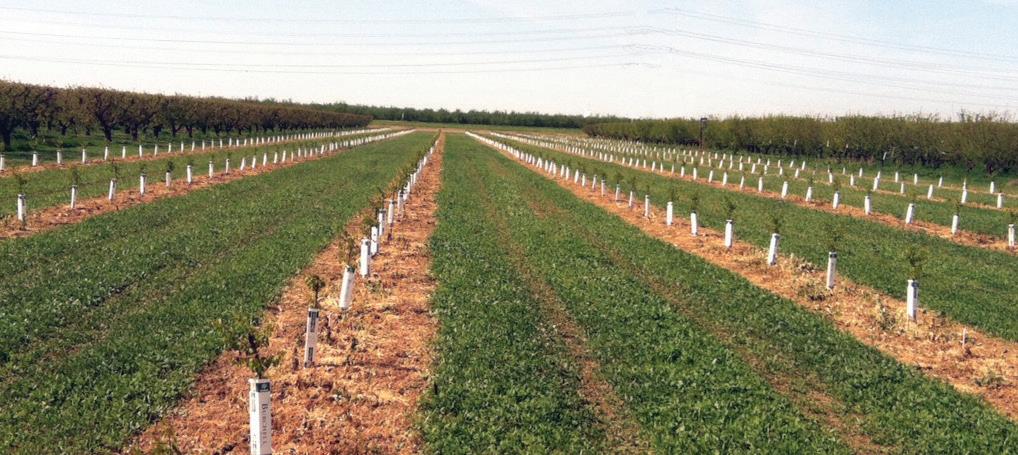
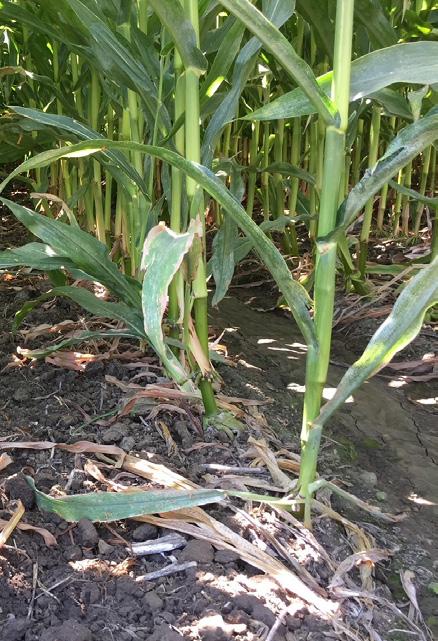
Comments about this article? We want to hear from you. Feel free to email us at article@jcsmarketinginc.com
YOUR

ADVANTAGES
■ Excellent tool in IPM programs


■ Helps break chemical resistance
■ No pre-harvest interval or MRLs
■ Low-foaming and easy-to-use
■ Highly effective pre-harvest desiccant
Contact us today to learn more.
September / October 2023 www.progressivecrop.com 23
(760) 599-8855 • www.san-agrow.com
SUPPRESS® Herbicide EC is the first and trusted leader for certified organic weed control. With years of grower-proven efficacy and university trials, SUPPRESS® consistently provides fast and effective broad-spectrum burndown on a wide variety of post-emergent grasses and weeds. YEAR-ROUND ORGANIC SOLUTION FOR WEED CONTROL & DESICCATION
Do Wider Beds in Fresh Market Onion Production Increase Total Water Productivity?

 By JAIRO DIAZ | Director, UC ANR Desert Research and Education Center, DANIEL GEISSELER | UCCE Nutrient Management Specialist, and ROBERTO SOTO| Faculty Member, Universidad Autonoma de Baja California
By JAIRO DIAZ | Director, UC ANR Desert Research and Education Center, DANIEL GEISSELER | UCCE Nutrient Management Specialist, and ROBERTO SOTO| Faculty Member, Universidad Autonoma de Baja California
Imperial County, located in Southern California, has a large agricultural sector with close to 500,000 acres in production. The region’s major agricultural sectors are cattle feedlots, forages and vegetables. Imperial County and surrounding areas produce an estimated two-thirds of the nation’s vegetables in the winter. In the last decade, the use of pressurized irrigation systems (solid set sprinklers and drip irrigation) and wider beds in vegetable production has gained popularity in Imperial County. Imperial County is a top fresh market onion region with over 3,000 acres in annual production. Agriculture in Imperial County relies on just one water source:
the Colorado River. As the Colorado River basin (CRB) is reaching more than 20 years of continuous drought, the US Bureau of Reclamation is working with basin users to develop strategies that may reduce water usage between 2 and 4 million acre-feet per year. Most
of the projected water cuts are expected from agriculture due to its high share of water use. Agricultural users and water regulators in the CRB are discussing strategies to promote water conservation practices and improve water use efficiency while keeping a large and productive
24 Progressive Crop Consultant September / October 2023
1. Table 2. *GDD = growing degree days was based on a minimum base temperature of 42.8 degrees F and a maximum temperature of 68.0 degrees F. ETc = crop evapotranspiration. Growth stage Days after planting Crop coefficient Emergence 0-30 0.40 Two/three leaves to bulb development 45-165 0.84 Bulb fully developed to dry leaf stage 170-harvest 0.62 Cultivar Plant-Harvest Rainfall (in) Irrigation GDD* (oF-d) 100% ETc (in) 130% ETc (in) Terena 10/24/2019 –5/1/2020 4.7 15.9 18.9 2,948 Hornet 10/27/2020 –5/3/2021 1.3 21.4 24.6 3,003
Table
Table 1. Growth stage onion crop coefficient values used in this study (Montazar 2019).
Figure 1. Onion sizes (L-R prepack, medium, jumbo, colossal and super colossal) per season. Terena in 2019-20 (top), and Hornet in 2020-21 (bottom).
agricultural sector that feeds Americans with high-quality food all year long. The objective of this study was to assess the effect of two bed sizes and two irrigation amounts on onion yield and water productivity.



Methods


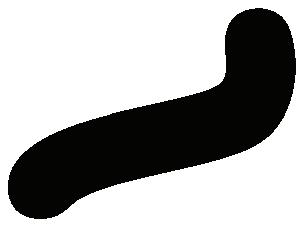

This study was performed during two growing seasons (2019-20 and 2020-21) at the UC Desert Research and Extension Center (DREC) in Holtville, Calif. The major soil unit in testing areas is a Holtville clay with clay, silt and sand proportions of approximately 42%, 19% and 39%, respectively.
Two irrigation levels were evaluated: 100% and 130% of crop evapotranspiration (ETc). ETc was computed using potential evapotranspiration from the California Irrigation Management Information Systems (CIMIS) station at DREC (Meloland station #87) and adjusted by stage-specific crop coefficients (Table 1, see page 24) developed by Ali Montazar (2019) for Imperial County onion production. This study used sprinkler irrigation for crop emergence and until the beginning of bulbing to ensure an adequate establishment. This is a normal practice in our region. Irrigation treatments using drip
ContinuedonPage26
September / October 2023 www.progressivecrop.com 25
"Total water productivity did not increase as irrigation levels increased regardless of bed size."
We Are Here to Help Call: 209.720.8040 Visit: WRTAG.COM Mn Fe Zn Cu
Zinc-Shotgun® is a fertilizer that focuses on micronutrients to satisfy needs of customers seeking high zinc with manganese, iron and copper. The micronutrients are completely chelated with natural organic acids, amino acids, and carbohydrates that are readily bio-degradable and supply energy to the plant and soil microflora. Many soils are low in zinc and also require other micronutrients for the growth of good crops.
Complete,
organically complexed micronutrient package containing essential elements to improve plant health and growth.
Organically complexed with plant based amino acids, organic acids, and complexed polysaccharides.
The nutrients are readily absorbed by the plant for a faster response.
Designed to be applied both by foliar application and fertigation practices and is also e ective when applied directly to the soil.
= growing degree days was based on a minimum base temperature of 42.8 degrees F and a maximum temperature of 68.0 degrees F. ETc = crop evapotranspiration.
*GDD = growing degree days was based on a minimum base temperature of 42.8 degrees F and a maximum temperature of 68.0 degrees F. ETc = crop evapotranspiration.
systems were established in January of every season. Water amounts delivered through the drip irrigation system were computed using a daily water balance approach (irrigation needs = ETc - rainfall). Drip irrigation treatments started at bulb initiation (about eight leaves and a bulb diameter that was twice that of the neck.) Onion yields and sized distribution were measured at harvest. A two-sample t-test was performed to compare irrigation levels per bed size with SAS software. Total water productivity (TWP) was computed for each irrigation treatment. The TWP included rain and irrigation amounts. The TWP was computed as the total fresh onion yield divided by the total water use.
The drip tape was installed between 2- and 4-inches depth. One drip tape line was installed near the center of the 40-inch bed. Three drip tape lines were buried in the 80-inch bed plots. 4 and 12 lines of onions were planted in the 40inch and 80-inch bed rows, respectively. Research plots were 50 feet long and comprised four rows on 40-inch beds and three rows on 80-inch beds.
Results and Discussion
***Onion bulbs were categorized as prepack (less than 2.5 in), medium (2.5 to 3.25 in), jumbo (3.25 to 4 in), colossal (4 to 4.25 in), and super colossal (greater than 4.25 in) based on bulb diameter. Significant levels *, ** indicate significance at 0.05 and 0.01, respectively, according to t-test. ETc = crop evapotranspiration.
***Onion bulbs were categorized as prepack (less than 2.5 in), medium (2.5 to 3.25 in), jumbo (3.25 to 4 in), colossal (4 to 4.25 in), and super colossal (greater than 4.25 in) based on bulb diameter. Significant levels *, ** indicate significance at 0.05 and 0.01, respectively, according to t-test. ETc = crop evapotranspiration.
Table 2 shows onion cultivars, seasonal conditions and irrigation amounts per season. Terena and Hornet varieties are short-day, yellow hybrid onions (Figure 1, see page 24). Terena variety has a globe shape and Hornet is a grano-shaped onion.
Plant density used in this study is in the range used by growers in Imperial County (Table 3). Plant density on 80inch beds was about 50% higher than onions planted on 40-inch beds.
Significant levels *, ** indicate significance at 0.05 and 0.01, respectively, according to t-test. ETc = crop evapotranspiration.
Significant levels *, ** indicate significance at 0.05 and 0.01, respectively, according to t-test. ETc = crop evapotranspiration.
Total yields responded to irrigation amounts except in the trial with Hornet (2020-21) on 80-inch beds (Table 4). In the Hornet trial (2020-21) on 80-inch beds, we noticed the irrigation treatment using 130% ETc yielded a higher proportion of pre-pack sizes compared to other treatments. We also noticed Hornet grown on 80-inch beds did not yield super colossal sizes. These results indicate
26 Progressive Crop Consultant September / October 2023
Table 2.
Cultivar Plant-Harvest Rainfall (in) Irrigation GDD* (oF-d) 100% ETc (in) 130% ETc (in) Terena 10/24/2019 –5/1/2020 4.7 15.9 18.9 2,948 Hornet 10/27/2020 –5/3/2021 1.3 21.4 24.6 3,003 Cultivar Plant Density (onions/ac) 40 in 80 in Terena 118,300 175,400 Hornet 98,000 149,600 2.
Table 3.
Cultivar Plant-Harvest Rainfall (in) Irrigation GDD* (oF-d) 100% ETc (in) 130% ETc (in) Terena 10/24/2019 –5/1/2020 4.7 15.9 18.9 2,948 Hornet 10/27/2020 –5/3/2021 1.3 21.4 24.6 3,003 Cultivar Plant Density (onions/ac) 40 in 80 in Terena 118,300 175,400 Hornet 98,000 149,600
3.
Table 4.
Table 5.
Cultivar/Year (bed size) Irrigation Level Prepack Medium Jumbo Colossal Super Colossal Total ton/acre Terena/ 2019-2020 (40 in) 100% ETc 0.6 5.8 32.4 9.7 2.0 50.6 130% ETc 0.6 4.8 31.2 12.6 3.1 52.4* Terena/ 2019-2020 (80 in) 100% ETc 1.5 19.2* 33.9 1.3 0.0 55.9 130% ETc 1.3 11.1 46.8* 6.3* 2.8** 68.2** Hornet/ 2020-2021 (40 in) 100% ETc 0.9 9.2* 12.5 6.0 4.7 33.3 130% ETc 0.7 7.4 18.1** 5.9 5.0 37.0* Hornet/ 2020-2021 (80 in) 100% ETc 0.6 21.4 21.2 0.2 0.0 43.5 130% ETc 2.0* 17.5 21.3 1.3 0.0 42.1 Cultivar (Year) Irrigation Level Total Yields (ton/ac) Total Water Productivity (ton/ ac-in) 40-in 80-in 40-in 80-in Terena (2019-2020) 100% ETc 50.6 55.9 2.5** 2.7 130% ETc 52.4* 68.2** 2.2 2.9 Hornet (2020-2021) 100% ETc 33.3 43.5 1.5 1.9** 130% ETc 36.9* 42.1 1.4 1.6
Table 4.
Table 5.
Cultivar/Year (bed size) Irrigation Level Prepack Medium Jumbo Colossal Super Colossal Total ton/acre Terena/ 2019-2020 (40 in) 100% ETc 0.6 5.8 32.4 9.7 2.0 50.6 130% ETc 0.6 4.8 31.2 12.6 3.1 52.4* Terena/ 2019-2020 (80 in) 100% ETc 1.5 19.2* 33.9 1.3 0.0 55.9 130% ETc 1.3 11.1 46.8* 6.3* 2.8** 68.2** Hornet/ 2020-2021 (40 in) 100% ETc 0.9 9.2* 12.5 6.0 4.7 33.3 130% ETc 0.7 7.4 18.1** 5.9 5.0 37.0* Hornet/ 2020-2021 (80 in) 100% ETc 0.6 21.4 21.2 0.2 0.0 43.5 130% ETc 2.0* 17.5 21.3 1.3 0.0 42.1 Cultivar (Year) Irrigation Level Total Yields
40-in 80-in 40-in 80-in Terena (2019-2020) 100% ETc 50.6 55.9 2.5** 2.7 130% ETc 52.4* 68.2** 2.2 2.9 Hornet (2020-2021) 100% ETc 33.3 43.5 1.5 1.9** 130% ETc 36.9* 42.1 1.4 1.6 ContinuedfromPage25
(ton/ac) Total Water Productivity (ton/ ac-in)
Table 2. Onion cultivars, seasonal conditions and irrigation amounts per season.
Table 4. Effect of irrigation rates on fresh market onion size distribution and total yield.
Table 5. Total yields and water productivity by cultivar.
Table 3. Plant density by cultivar and bed size.
Hornet seeds were planted too close in the 80-inch beds, reducing bulb size in the higher-irrigation treatment.
Terena treatments in 2019-20 produced a larger proportion (63% to 90%) of high-value bulbs (jumbo, colossal and super colossal) than Hornet in 202021(49% to 78%). High-value bulbs produced by irrigation treatments at 130% ETc were consistently higher than in the 100% ETc treatments. When onions were sorted by sizes and per-unit yields were computed, Terena’s yields were approximately 20% higher than Hornet’s yields.
Irrigation levels did not affect total water productivity (TWP) for Terena (201920) grown on 80-inch beds and Hornet (2020-2021) grown on 40-inch beds (Table 5, see page 26). Total water productivity decreased as irrigation increased in the following trials: Terena (2019-20) on 40-inch beds and Hornet (2020-21) on 80-inch beds. Total yields on 80-inch beds increased between 10% and 31% compared to total yields on 40-inch beds (Table 5, see page 26). Total water productivity was higher when onions were harvested on 80-inch beds than onions produced on 40-inch bed systems. Total water productivity of onions using 80-inch beds increased between 8% and 32% compared to onions grown on 40inch beds.
Highlights
• Terena variety produced higher yields than Hornet variety.
• High-value bulbs (jumbo, colossal and super colossal) produced by irrigation treatments at 130% ETc were consistently higher than with 100% ETc.
• Total water productivity did not increase as irrigation levels increased regardless of bed size.
• Fresh market onions on 80-inch beds were more water efficient than onions produced using 40-inch beds.
References
Montazar, A. 2019. Preliminary estimation of dehydrator onion crop water needs in the Imperial Valley. Agricultural Briefs 22(7):131-135. University of California Cooperative Extension –Imperial County.
This research included funds from the California Department of Food and Agriculture’s Fertilizer
Research and Education Program.
For more information, contact Jairo Diaz at jdiazr@ucanr.edu or 760-791-0521.
Comments about this article? We want to hear from you. Feel free to email us at article@jcsmarketinginc.com
FUNDAMENTAL FACTORS
Abiotic stress is the negative impact of non-living factors and can lead to biotic stress. Abiotic stress is caused by four fundamental factors: weather, soil health , nutritional imbalance , and oxidative stress. Yield and quality are reduced when abiotic stress occurs.
Redox technologies promote Abiotic Sress Defense
Our proven technologies provide highly focused and available nutrition, with the benefits of biostimulant compounds to mitigate seasonal stresses.

September / October 2023 www.progressivecrop.com 27
Scan to learn more Contact us for more information at (208) 678-2610 @redoxgrows redoxgrows.com LISTEN TO OUR REDOX GROWS PODCAST Scan the QR code to listen to our Podcast
Navel Orangeworm Hullsplit Spray Considerations in 2023

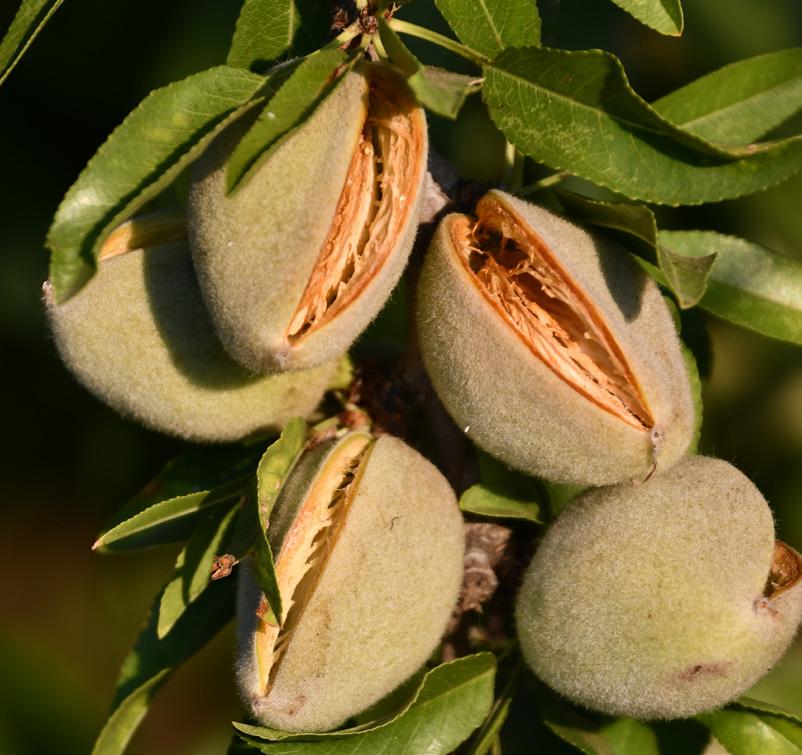 By SUDAN GYAWALY | UCCE IPM Advisor, Northern Sacramento Valley
By SUDAN GYAWALY | UCCE IPM Advisor, Northern Sacramento Valley


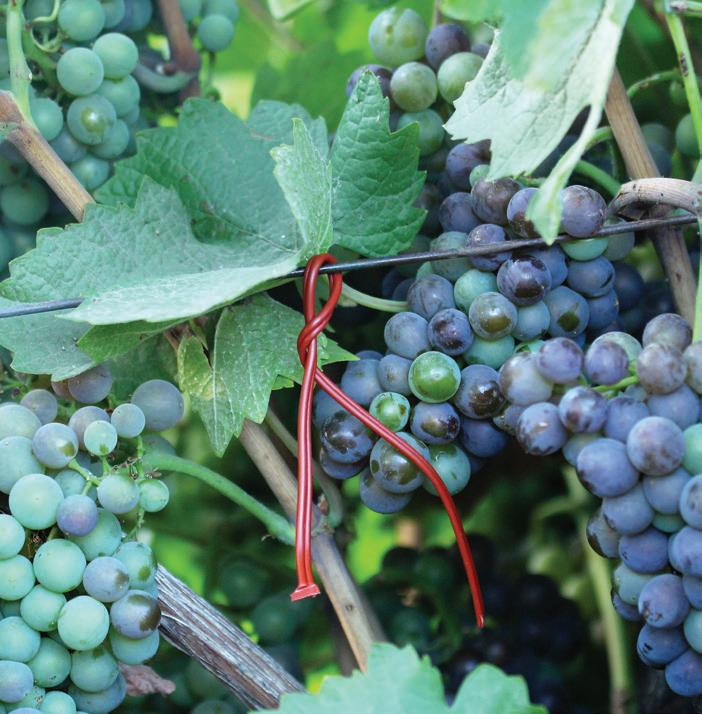
28 Progressive Crop Consultant September / October 2023
If the beginning of Nonpareil hullsplit coincides with egg laying time of the second flight of NOW, the risk of NOW damage increases. (all photos by Vicky Boyd.)
From the standpoint of navel orangeworm (NOW) management in almonds, hullsplit is the most critical fruit developmental stage. Almond fruits open at their suture during this period and become susceptible to NOW infestation. If the beginning of Nonpareil hullsplit coincides with egg laying time of the second flight of NOW, the risk of NOW damage increases. Therefore, understanding NOW activity and hullsplit status is vital for timely insecticide applications. The nuts on the southwest side of the canopy mature earlier, so the initiation of hullsplit in a block should be confirmed by regularly checking on the southwest side of the canopy. An orchard ladder or pruning tower can aid in reaching the fruits from the top of the representative trees to detect early split. Also, knowing the difference between true hullsplit and blank nut split is essential because blank nut hullsplit usually begins one to two weeks before the sound nut hullsplit begins. Nuts in edge trees, especially on the southern edge of an orchard, often start to split several days to a week ahead of trees within the orchard. Edge and blank splits signal the approach of hull split of sound nuts inside the orchard. Hullsplit timing varies among tree water status, varieties, geographic regions and weather conditions; however, prediction models are available to predict hullsplit timing for various locations. Research and field experience tell us that spraying earlier, rather than later, is the most effective strategy for reducing NOW damage.
NOW Traps and Spray Decision
NOW monitoring (egg, male and female) traps do not provide a specific treatment threshold; however, they can be highly beneficial for spray decision-making since they inform the grower about seasonal pest activities. Egg traps are helpful to set the egg-laying biofix for overwintering adults in the spring and track the heat units to determine the completion of that generation and the beginning of the second generation (i.e., 1050 degree-days). The second generation infests the early hullsplit nuts, and the timing for that generation is critically important to minimize the nut damage. The utility of egg traps for guiding spray timing would be less clear for the later generations
because of the continuation of egg-laying due to overlapping adults among generations. However, the density of egg laying in egg traps and female moth activity (in Peterson traps or similar tools) are good indicators of potential NOW pressure and, possibly, nut damage.
Experience shows that unless an orchard is in an isolated location with a history of very low NOW damage and low NOW population, most almond orchards in
the Northern Sacramento Valley warrant at least one spray at hullsplit. However, missing proper spray timing and not practicing other cultural practices such as winter sanitation may result in higher-than-acceptable levels of nut damage. Therefore, minimizing NOW damage requires practicing cultural techniques, such as winter sanitation and timely harvest, monitoring pest populations
CITRUS









Afrikelp is a unique liquid concentrate extracted from the sustainably harvested South African brown Kelp Ecklonia maxima.
For more information, please visit www.afrikelp-usa.com, or contact us directly (559) 515 - 6177 / Jorellana@afrikelp.com

September / October 2023 www.progressivecrop.com 29
ContinuedonPage30
Quality parameters in Tango mandarin during 3 seasons (2021, 2022 and 2023). Dr. Ashraf El-kereamy. Director of UC Lindcove Research & Extension
5.7 5.9 5.5 5.7 5.9 6.1 Control Afrikelp cm Fruit size – width (cm) 4.7 5.1 4.5 4.7 4.9 5.1 5.3 Control Afrikelp cm Fruit size – length (cm) 465 475 450 460 470 480 Control Afrikelp Firmness 11.4 12.0 10 12 Control Afrikelp TSS/Acid Ratio
Note: Average of 3 years consecutive in Tango mandarin on Carrizo rootstock.
and making well-timed insecticide sprays. Once hulsplit begins and eggs are being laid in egg traps, spray to protect early hullsplit, watch traps tracking females (egg and/or Peterson traps) and check early split nuts for worms to make preharvest spray decisions and decide on harvest timing. If NOW pressure is high, it might be worth a talk with the processor to look at timely harvest and kernel (meats) production vs later harvest for inshell. If NOW pressure is high, damage can increase very rapidly, and every day the nuts are in the trees increases the danger of further damage.
Determining Spray Timing and Numbers
The number and timing of hullsplit sprays depend on orchard history, in-season pest monitoring information, use of other cultural practices such as winter sanitation and timely harvest, and overall risk of NOW immigration to the orchard. Typically, the first hullsplit spray for NOW is made when the eggs are being laid and the hullsplit begins. Commonly used, relatively reduced-risk insecticides only kill eggs and larvae. Some are effective against adults; however, insecticides must contact adults to be effective. Spraying during the night or early morning is more effective than spraying during the day. These insecticides can be effective for two to four weeks; a second application may be necessary if you continuously find high numbers of eggs, females and males in their respective traps and you cannot harvest the nuts before the third flight activity. Early hullsplit
pollinizers split about two weeks after Nonpareil; the hullsplit typically starts when the NOW third flight begins. For many growers requiring a second hullsplit spray, a second application can help both Nonpareil and pollinizers. Late-season pollinizer varieties can be at risk from the latter portion of the third and fourth flights if not harvested on time.
Additional Considerations

Provide good spray coverage. Good spray coverage is essential for effective NOW control. Many years of study have indicated spray coverage is the function of tree height, sprayer speed and spray volume. In mature almond orchards, it has been shown that high-volume spray (150 to 200 GPA ) with a slower spraying speed (2 mph) provides better coverage and NOW control, though it is an unconventional practice for many growers.
Harvest on time. The goal of timely harvest is to get the almond harvested once 100% hull split occurs for all varieties, and if possible, before the beginning of the third generation for Nonpareil and before the fourth generation for other late varieties. Ensuring that nuts are at the proper maturity stage during the harvest is critical. Too early harvest can lead to mold development and chipping issues during the processing, reducing the nut quality.
Know your insecticides. Insecticides differ in their mode of action, efficacies to NOW and toxicity to beneficials (Table 1). Knowing those facts can help select the best insecticide for a particular situation. Most of the insecticides labeled for NOW target newly hatched larvae and have some impacts on eggs.

30 Progressive Crop Consultant September / October 2023
ContinuedfromPage29
Table 1.
Disclaimer: Products listed in this table do not constitute a recommendation, and many of the active ingredients presented in this article can be purchased under multiple trade names.
Some have effects on all stages. Insecticides applied for NOW management at hullsplit must kill the egg or larva before feeding damage occurs. Another difference among NOW insecticide is their potential effects on spider mite predators such as predatory mites and sixspotted thrips. Non-selective insecticides, in general, are more toxic to those beneficial than selective insecticides. Therefore, the tradeoff of using broad-spectrum insecticide should always be considered.
Understand seasonal changes in NOW biology and behavior. NOW development rate changes during the season. The first and second generation of NOW needs about 1050 degree-days to complete one generation. However, after that, NOW can complete a generation in only 750 degree-days due to better nutritional quality offered by the fresh nuts. Temperature plays a significant role, too, as higher temperatures during the summer accelerate egg hatching and larvae development.
Comments about this article? We want to hear from you. Feel free to email us at article@ jcsmarketinginc.com
The goal of timely harvest is to get the almond harvested once 100% hull split occurs for all varieties, and if possible, before the beginning of the third generation for Nonpareil and before the fourth generation for other late varieties.
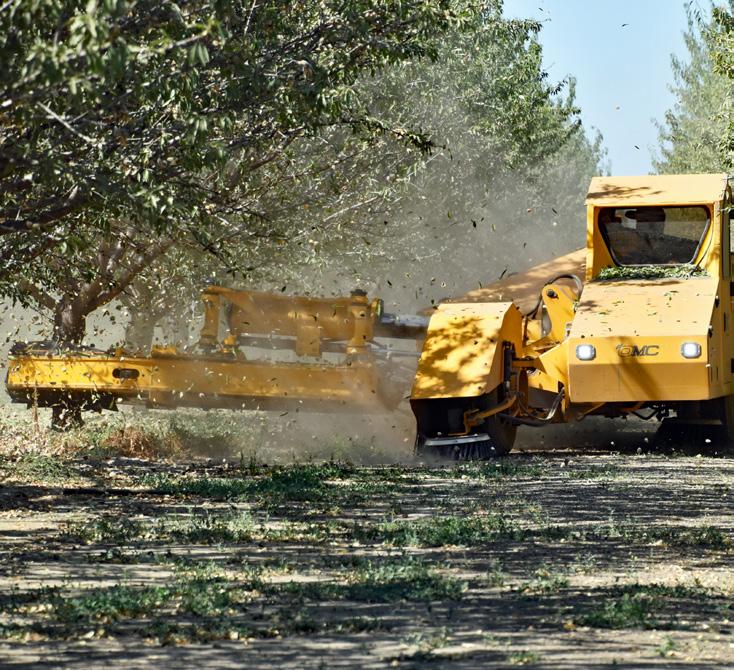
September / October 2023 www.progressivecrop.com 31
Contact us to see how we can help! (559)584-7695 or visit us as www.superiorsoil.com Serving California since 1983
Tips for Managing Vine Nutrition in Vineyards
 By TIAN TIAN | UCCE Viticulture Farm Advisor, Kern County
By TIAN TIAN | UCCE Viticulture Farm Advisor, Kern County


Proper nutrition management allows vines to grow healthy canopies and produce fruit with desirable quality. Fertilization is used to correct nutrient deficiency and improve vine productivity. Even in vines without foliar symptoms, growers may fertilize as a routine practice to compensate nutrient loss at harvest and prevent nutrient deficiency. As a result, sometimes managing vine nutrition simply means applying fertilizers. I would argue that understanding vine nutrient status and determining their nutrient needs are as important as fertilization itself.
Grapevines have lower fertilization requirements than many agricultural crops. Overfertilization does not offer many benefits from economic or vine productivity points of view. Instead, it could compromise vine balance, decrease fruit quality and negatively affect the environment. Let’s use ni-
Beat the Heat & Care for Your Crops with:
•
•
What is Anti-Stress 550®?
When to apply Anti-Stress 550®?
Anti-Stress 550
Frost & Freeze
®
A foliar spray that creates a semi-permeable membrane over the plant surface.

Optimal application period is one to two weeks prior to the threat of high heat.
When is Anti-Stress 550® most e ective?
The coating of Anti-Stress becomes e ective when the product has dried on the plant. The drying time of Anti-Stress is the same as water in the same weather conditions.
*One application of Anti-Stress 550® will remain e ective 30 to 45 days, dependent on the rate of plant growth, application rate of product and weather conditions.
559.495.0234
• 800.678.7377
trogen (N) as an example here. Excessive N additions lead to jungle-like canopy with limited light penetration and air circulation, increase disease pressure and negatively affect fruit quality. Excessive amounts of nitrate in the soil also increase the risk of groundwater and surface water contamination.
Supplying vines with ample but not excessive nutrients is easier said than done. In this article, I will start the story with summarizing previous work on whole vine nutrient budget and then extend the discussion to determining vine nutrient requirements and fertilization.
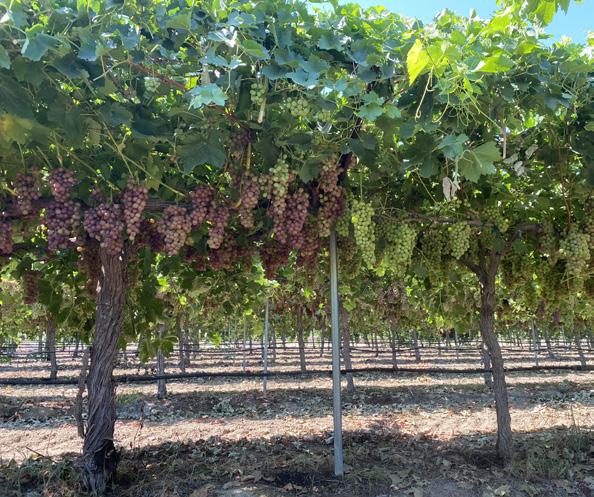
Whole Vine Nutrient Budget
Studies were conducted under field conditions in California and Oregon and in potted systems in South Africa to track nutrient uptake, movement and distribution among vine organs at different phenological stages.
In terms of macronutrients, annual growth is a strong sink for N, phosphorus (P), potassium (K), calcium (Ca) and magnesium (Mg) between bud break and veraison. Required nu-

32 Progressive Crop Consultant September / October 2023
Order from your PCA or local Ag Retailer / Crop Protection Supplier
polymerag.com • customerservice@polymerag.com Additional Environmental Stress Conditions that the product is useful for:
High Temperatures & Extreme Heat • Drought Conditions
Transplanting •
Winds
Drying
Understanding vine nutrient status and determining their nutrient needs are as important as fertilization itself (all photos by T. Tian.)
In terms of macronutrients, annual growth is a strong sink for nitrogen, phosphorus, potassium, calcium and magnesium between bud break and veraison.
trients of shoots, leaves and clusters can be obtained from two pools: nutrients remobilized from permanent organs and those taken from soil. In mature vines, up to 50% of N and P in new growth can be supplied by the stored reserve in trunks and roots. On the other hand, less than 15% of K, Ca and Mg are remobilized from the reserve, since only a small percentage of those nutrients can be recycled during leaf fall. Clearly, nutrients obtained from the soil still account for a large portion of required nutrients, even in the mature vines. Young vines have less nutrient reserve than older vines, and thus rely more on nutrients supplied by root systems. Nitrogen uptake peaks between bud break and bloom, while uptake of other macronutrients usually reach the max between bloom and veraison. Nutrient uptake also takes place after harvest when nutrients are available in the soil and weather conditions are favorable.
The uptake and distribution of micronutrients is less understood as compared to macronutrients. Dr. Paul Schreiner, scientist at USDA-ARS, studies the budget of micronutrient in young and older ‘Pinot noir’ vines in Oregon’s Wil lamette Valley. In young vines, boron, zinc, manganese and copper were taken between bud break and harvest, with the peak of uptake occurring between bloom and veraison. The uptake and allocation of micronutrients appears less consistent in mature vines.
Please note that research findings reflect vine nutrient budget under specific conditions and should be interpreted with caution. Factors like soil nutrient availability, irrigation practices, rootstock and scion combination and weather conditions have large impacts on nutrient uptake and allocation. Clearly, vine nutrient demand varies between vineyards. So, how should one determine whether fertilization is needed at a specific site?
Determine Nutrient Requirement of Vines

Nutrient analyses of leaf blades and leaf petioles at bloom and veraison are indicators of vine nutrient status. Many
testing labs provide the comparison of leaf nutrient concentration to the normal range for each nutrient.
We recommend growers not relying solely on numbers on lab results to make fertilization decisions. First, variability in vine nutrient requirement is expected between vineyards and across seasons. Even if the tissue nutrient concentration of a vineyard is slightly below
the given normal range, it does not mean vines surely experience nutrient deficiency. Second, normal ranges of leaf nutrients are estimated in experiments where vines received a specific nutrient at different rates and had its concentration over a wide range of leaf tissues. Given the difference in experimental setup, the normal range determined

September / October 2023 www.progressivecrop.com 33
THE BEST WAY TO MANAGE PATHOGENS BEFORE THEY BECOME AN ISSUE.
*TriClor and Telone are federally Restricted Use Pesticides. 669-327-5076 www TriCal.com Authorized distributor for Telone® ContinuedonPage34
TriClor is chloropicrin based and can be used as a standalone or as a complement to Telone® depending on your orchard redevelopment needs. When targeting soil borne disease and nematodes, TriClor and Telone® can be applied in a single pass. This reduces application costs, promotes early root development, and improves soil health. For more information about TriClor and Telone or to schedule an application contact TriCal, Inc.
can vary between studies. Thus, the normal range for nutrients should be used only as references when it comes to interpreting vine nutrient requirements. Historical nutrient data, vine growth and production goals are important to consider. For example, fast-growing canopies may have lower leaf N concentration, especially in newly expanded leaves, but does not mean that vines require N fertilization. Instead, rapid shoot growth often indicates ample N and water availability in the soil.
Fertilization
In vineyards where fertilization is needed, growers and CCAs often ask me about the amount, formula and application timing of fertilizer. Rather than providing generalized answers for those questions, I would like to share some tips. Please feel free to reach out for questions related to your vineyards.


About 3 lb N, 0.5 lb P and 5 lb K are removed from a vineyard with each ton of harvested fruit. Many would use those numbers to calculate how much fertilizer is needed to compensate the loss during harvest. In reality, supplementing vines only with nutrients removed from the vineyard may not be sufficient. For instance, data from western Oregon showed that young ‘Pinot noir’ vines acquired 12.5 lb N, 3 lb P and 25 lb K per acre via uptake with the crop level at 2.0 ton/acre.
Compost is an affordable, slow-releasing fertilizer. Applying compost in the spring supplements vines with nutrients, boost soil microbial activity, improves soil water penetration by aggregation and enhances water holding capacity. Increasing soil organic matter is good practice for soil health in general.
Soil pH plays key roles on nutrient availability. Most nutrients become more available in soils with neutral pH.

Regular soil sampling and testing can help with managing and adjusting soil pH if needed.
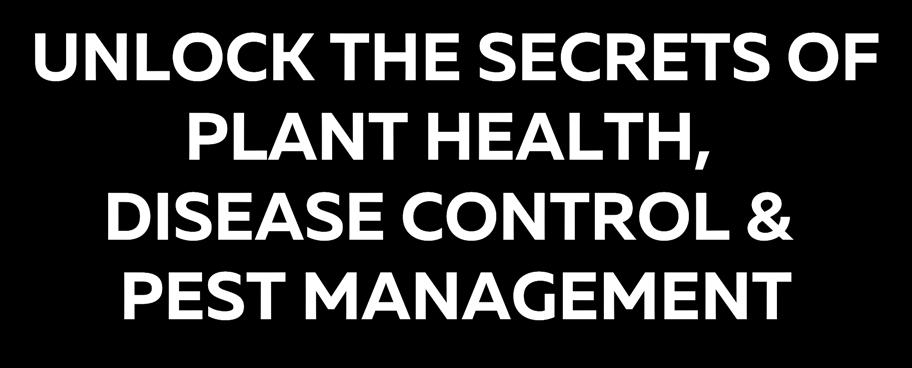
If nutrient deficiency is observed late in the season, immediate fertilization may not alleviate the symptoms. It is because the period when nutrient deficiency becomes evident would not be coincident with the period when nutrient uptake peaks. Making applications at the right timing in the following season may be more effective on correcting deficiency.
Even though vines obtain nutrients mainly from the soil by roots, foliar application can be an additional tool to supplement vines with nutrients. In the past, we successfully increased fruit N at harvest in wine grapes by applying urea to foliage between fruit set and veraison. Foliar application of P and Mg was found to reduce leaf symptoms in wine grapes. Some PCAs suggest foliar Ca and Mg sprays between bloom and veraison can increase berry firmness
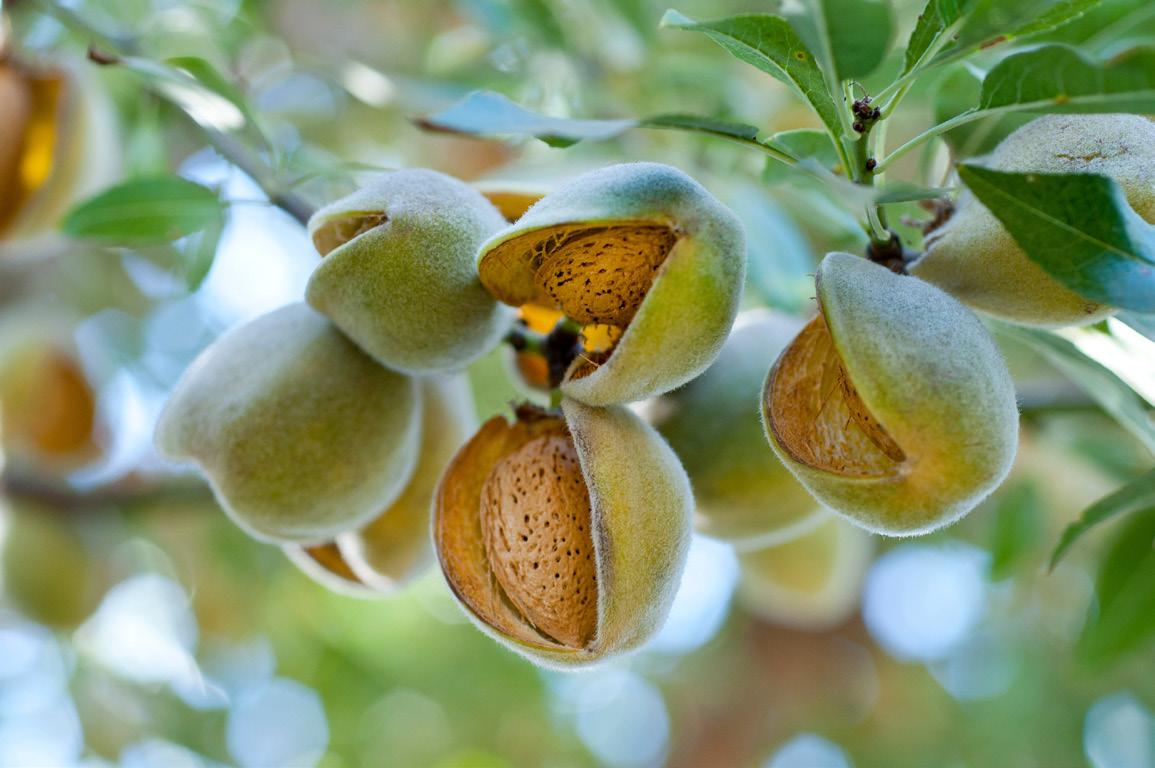
34 Progressive Crop Consultant September / October 2023
ContinuedfromPage33
Even if the tissue nutrient concentration of a vineyard is slightly below the given normal range, it does not mean vines surely experience nutrient deficiency.

and reduce powdery mildew occurrence in table grapes.







Applying fertilizers in small doses may improve fertilization efficiency in vineyards with shallow root systems. Theoretically, frequent fertilization with lower doses allows roots to better catch nutrients and reduce leaching.
References
Araujo FJ and Williams LE. 1988. Dry matter and nitrogen partitioning and root growth of young field-grown Thompson Seedless grapevines. Vitis 27:21-32.
Conradie WJ. 1980. Seasonal uptake of nutrients by Chenin blanc in sand culture: I. Nitrogen. S Afr J Enol Vitic 1:59-65.
Conradie WJ. 1981. Seasonal uptake of nutrients by Chenin blanc in sand culture: II. Phosphorus, potassium, calcium and magnesium. S Afr J Enol Vitic 2:7-14.
Schreiner RP, Scagel CF and Baham J. 2006. Nutrient uptake and distribution in a mature ‘Pinot noir’ vineyard. HortScience 41:336-345

Schreiner RP. 2016. Nutrient uptake and distribution in young Pinot noir grapevines over two seasons. Am J Enol Vitic 67:436-448
Comments about this article? We want to hear from you. Feel free to email us at article@jcsmarketinginc.com









September / October 2023 www.progressivecrop.com 35
Challenges and Prospects for Biopesticide Discovery
By PHILIPPE ROLSHAUSEN | Ph.D., Professor of Cooperative Extension, Department of Botany and Plant Sciences, UC Riverside
The world population is projected to reach about 10 billion individuals by 2050. As a result, the agricultural sector needs to produce more food despite several looming challenges, including the shrinking of arable land, erratic and extreme weather patterns and pest and disease outbreaks. Higher agricultural outputs per surface basis is one key element to solve the equation of a growing demand, which inevitably results in an increase of agrochemical inputs (pesticides, fertilizers). The global agrochemical market size is valued at $235.2 billion in 2023 and is expected to reach $280 billion by 2028, growing at a compound annual growth rate (CAGR) of 3.7% during the forecast period. The major driving force behind this uptrend comes from the organic sector. Hence, the global agricultural biologicals market (biopesticides, biostimulants and biofertilizers) is projected to grow at a CAGR of 13.8% to reach $27.9 billion by 2029 from $14.6 billion in 2023.
There is a growing consumer demand for organically grown and safe agricultural products. There is also a collective awareness of the potential risks associated with pesticide use, including impact on human health (e.g., increase of cancers linked to pesticide use), contamination of environmental resources (e.g., leaching of chemicals in groundwater) and non-target side effects on wildlife (e.g., bee population collapse). This has led to a tightening of policies by governments and regulatory agencies for conventional chemical use and chemical residue limits and the phasing out of harsh synthetic agrochemicals. Growers are at the forefront of the sustainable ag movement and have adapted their farming practices to meet both consumer and agency demands. Replacing synthetic chemicals with organic products or biologicals in their agrochemical ar-
senal can be challenging because of the limited scientific information on their mode of action and range of efficacy. In this article, we will mostly focus the discussion on sustainable strategies to control diseases with biopesticides, the discovery pipeline within the framework of my research and the prospects for the future.
In Integrated Pest Management Fostering sustainable farming practices that promote and enhance agroecosystem health and increase biodiversity are instrumental to our long-term success. Integrated pest and disease management programs (IPM or IPDM) have been central to this philosophy. The framework of IPM programs is to reduce synthetic agrochemical inputs and rely first on alternative strategies, such as adapted management practices, use of resistant/tolerant plant varieties and deployment of organic agrochemicals and biologicals. IPM programs were at times challenging to implement to manage certain crop diseases because of the lack of relevant alternatives to synthetic agrochemicals. Organic agrochemicals suffer from a short window of activity and under high disease pressure they must be applied often. Also, those products are not free of environmental risks. For example, the copper-based Bordeaux mixtures have been used for over a century in viticulture and are known to impoverish vineyard soil biota and affect aromas in wine. Biologicals also often suffered from a lack of credibility because of their inconsistency to control diseases. From a grower standpoint, there is too much economical risk to rely on uncertainty. However, recent scientific discoveries and technological advances have helped strengthen IPM programs in many ways. First, they have and continue to improve the formulations
of agrochemicals (conventional, organic and biological) and, most importantly, their deliveries to target pests and pathogens. Scientific reports indicated that only 0.1% to 1% of sprayed material reaches its target depending on the system. Thus, increasing delivery efficiency will reduce leaching of chemicals in the environment. Second, the advent of ‘omics’ technologies and affordability of sequencing costs have allowed industry to identify biological candidates in a quick and reliable manner. This has revolutionized the field of microbiology (among others) that traditionally used ancestral culturing techniques to single out biological agents from environmental samples, which equated to finding a needle in a haystack. In today’s era, we can generate large-sequence datasets that capture not only entire microbial communities associated with plants or environments but also shed light on their biological functions. To be able to see in a high-throughput manner ‘who does what’ has streamlined the discovery of biological products.
Finding Beneficial Microbes for Diseased Systems
My lab has been using omics tools to identify beneficial organisms inhabiting citrus and grapevine that could be leveraged to manage Huanglongbing (HLB) and Pierce’s disease (PD), respectively. Both diseases are caused by bacterial pathogens transmitted by insect vectors following feeding on the plant host. In citrus HLB, the bacterium (Candidatus Liberibacter asiaticus) lives in the phloem tissues that transport sugars downwards, from leaves to fruits and roots. In grapevine, the bacterium (Xylella fastidiosa) lives in the xylem tissues that transport water and nutrients upwards from roots to leaves. In both pathosystems, the buildup of bacteria in the hosts’ vasculature leads
36 Progressive Crop Consultant September / October 2023
to disruption of channel transport to a point that becomes detrimental to the plant. Citrus and grapevine decline can happen in as quickly as two years, but in some cases, the hosts can sustain the infection for several years. Our hypoth esis is the microbial communities living with the host provide protection against the pathogens with the goal of leverag ing their benefits for crop protection.

A survey of citrus orchards in Flor
with enrichment of several beneficial organisms that have the capabilities to -
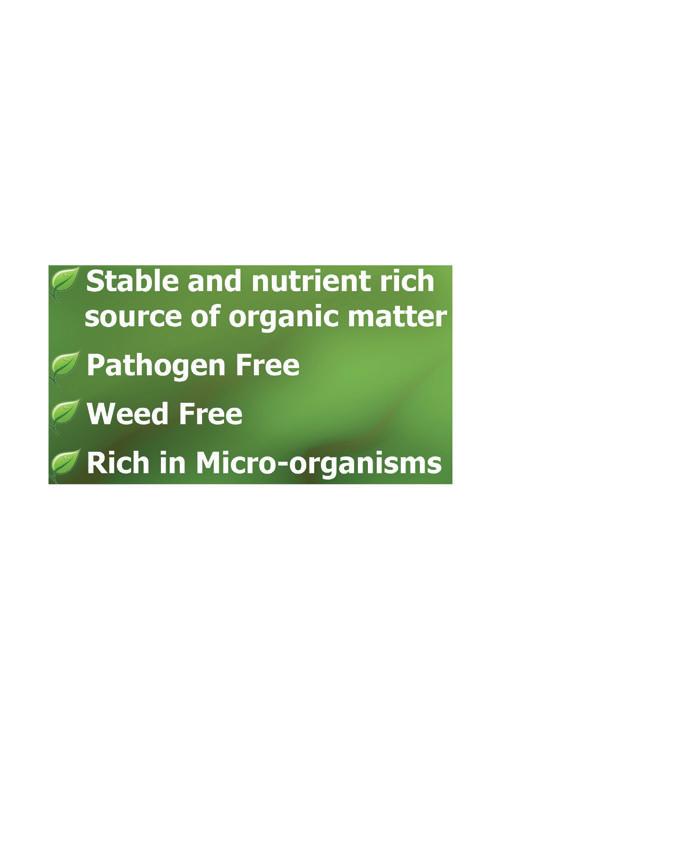

the infection (Phase III), we measured an increase of soilborne parasites and ) and
Helping Farmers Grow NATURALLY Since 1974


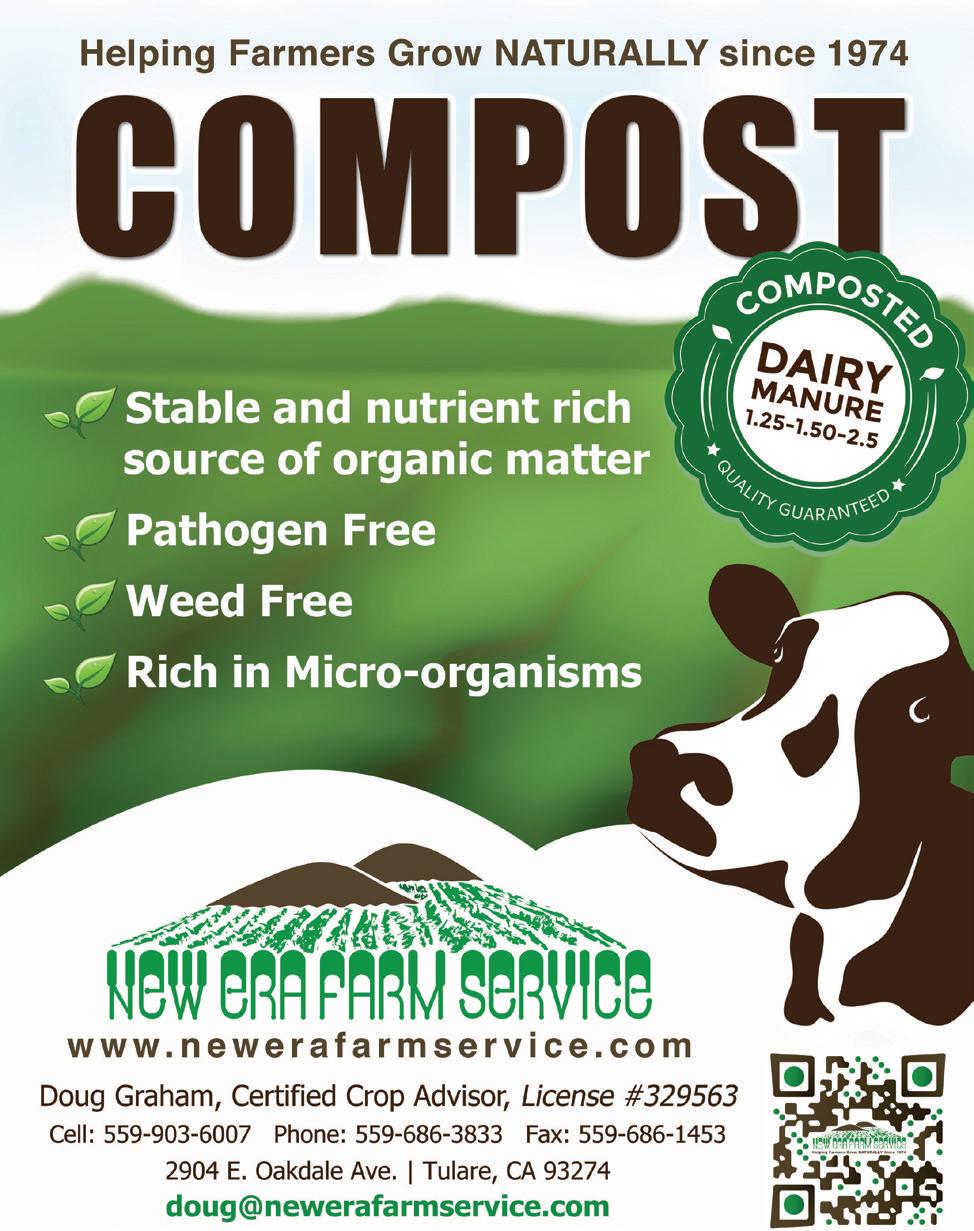
O ce: 559-686-3833 Fax: 5 59-686-1453 2904 E. Oakdale Ave. | Tulare, CA 93274 newerafarmservice .com
ContinuedonPage38
Figure 1. Microbial shift following decline of citrus trees caused by Huanglongbing (Ginnan et al. 2020).
decayed roots. Those findings indicate either HLB made trees more vulnerable to root pathogens or vice versa, but in either case, this synergistic effect caused trees to decline at a faster pace. This research led to the pursuit of two strategies that are now being evaluated to combat HLB. The first strategy is to re-introduce into the system beneficial microbes or microbial natural products isolated from Phase II and verify these can support tree immunity. The second strategy is to identify cultural practices like soil amendments that support the keystone and symbiotic communities.
Similar to citrus, we surveyed vineyards and profiled the microbiome of grapevine with a range of Pierce’s disease symptoms (Figure 2). Here, we found interesting data when looking at the vine lignified shoot tissues (canes). In comparison to the root system, there are very few microbes living in the plant vasculature and even more so in annual tissues like canes that are pruned off every year. This is a perfect environment for the pathogenic bacterium to thrive due to the limited microbial competition. Our results showed that, just like in citrus roots, there was a microbial-mediated response to infection and that two bacteria that also inhabit the vascular system correlated negatively with the pathogen Xylella fastidiosa. In other words,
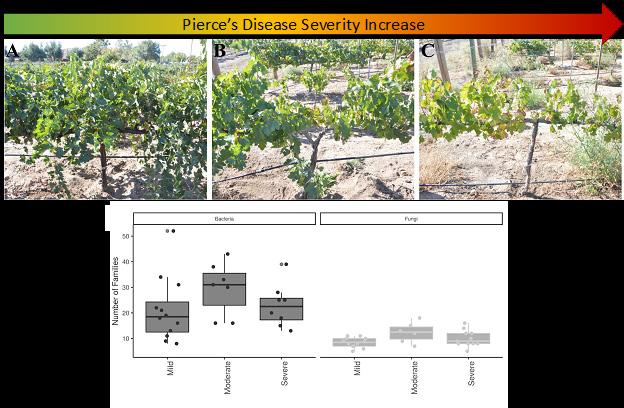
when those two beneficial bacteria were present and abundant, the pathogenic bacterium was low, and vines were healthy. Our group further re-isolated those beneficial bacteria and confirmed in greenhouse bioassays that when they were inoculated to grapevine, they provided protection against Pierce’s disease. These biological control agents are currently being evaluated at UC Davis in field trials. UC patented those technologies, and we are partnering with the private sector to develop injectable or sprayable products that could be commercialized for Pierce’s disease management.
There is a push from agricultural commodities to replace synthetic agrochemicals with environmentally friendly solutions. There are a lot of incentives for agrochemical companies to develop bio-based products, including an easier path to EPA registration. The lower residual toxicity levels of biopesticides make them the perfect choice to meet stringent environmental standards and address food safety and quality. However, biologicals still suffer from higher production costs because they are not produced and distributed in high volumes like their synthetic chemical counterparts. Increasing scalability and improving consistency in efficacy are two major hurdles for biopesticides to gain larger market share in the future.

References
Ginnan et al. 2020. Phytobiomes. https://doi. org/10.1094/PBIOMES-04-20-0027-R
Deyett and Rolshausen 2019. Frontiers in Plant Science. https://doi.org/10.3389/fpls.2019.01246
Comments about this article? We want to hear from you. Feel free to email us at article@ jcsmarketinginc.com
38 Progressive Crop Consultant September / October 2023
ContinuedfromPage37
Figure 2. Microbial mediated response to grapevine Pierce’s disease (PD) infection. A) Mild PD infection; B) intermediate PD infection; and C) severe PD infection. Bottom panel shows the bacterial response to infection in intermediate PD infection (Deyett and Rolshausen 2019).





Subscribe at MyAgLife.com or Download the MyAgLife App to Play in Your Vehicle Scan to Download
Promote root growth and improve soil
Improve nutrient absorption efficiency and fertilizer utilization

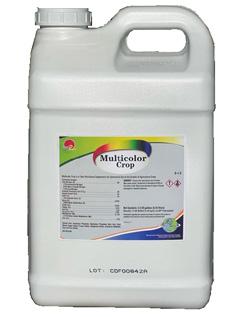

Increase production and improve quality
Drought and heat resistance
Cold and waterlogging resistance
Acid and alkali resistance
Disease resistance
In addition, you can see it achieve:
Increased fruit sugar content
Increased fruit density
Improved peel color and texture
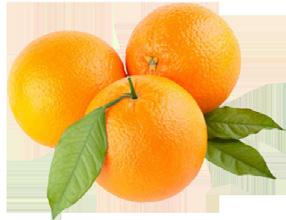
Sweet
Crop
Multicolor
Multicolor





















 By ERYN WINGATE | CCA, Board Member, Western Region Certified Crop Advisers
By ERYN WINGATE | CCA, Board Member, Western Region Certified Crop Advisers























 By NICK CLARK | UCCE Agronomy Advisor, Kings, Tulare and Fresno counties, ANIL SHRESTHA | Ph.D., Professor, California State University, Fresno, JENNIFER VALDEZ-HERRERA | Graduate Student Researcher, UC Davis, and KATHERINE WASELKOV | Ph.D., Professor, California State University, Fresno
By NICK CLARK | UCCE Agronomy Advisor, Kings, Tulare and Fresno counties, ANIL SHRESTHA | Ph.D., Professor, California State University, Fresno, JENNIFER VALDEZ-HERRERA | Graduate Student Researcher, UC Davis, and KATHERINE WASELKOV | Ph.D., Professor, California State University, Fresno




























 By JAIRO DIAZ | Director, UC ANR Desert Research and Education Center, DANIEL GEISSELER | UCCE Nutrient Management Specialist, and ROBERTO SOTO| Faculty Member, Universidad Autonoma de Baja California
By JAIRO DIAZ | Director, UC ANR Desert Research and Education Center, DANIEL GEISSELER | UCCE Nutrient Management Specialist, and ROBERTO SOTO| Faculty Member, Universidad Autonoma de Baja California









 By SUDAN GYAWALY | UCCE IPM Advisor, Northern Sacramento Valley
By SUDAN GYAWALY | UCCE IPM Advisor, Northern Sacramento Valley
















 By TIAN TIAN | UCCE Viticulture Farm Advisor, Kern County
By TIAN TIAN | UCCE Viticulture Farm Advisor, Kern County










































